Form 1 NIDILRR Annual Report
Annual Performance Reporting (APR) System for NIDRR Grantees (RERCs, RRTCS, FIPs, ARRTs, DBTAC, DRRPs)
NIDILRR-AnnualReport_withrevisions_121416
Annual Performance Reporting (APR) System for NIDRR Grantees
OMB: 0985-0050
National Institute on Disability, Independent Living, And Rehabilitation Research
ANNUAL PERFORMANCE REPORT
ALL PROGRAMS EXCEPT RFP
Public Reporting Burden
According to the Paperwork Reduction Act of 1995, no persons are required to respond to a collection of information unless such collection displays a valid OMB control number. The valid OMB control number for this information collection is 0985-0050, with an expiration date of xx/xx/2019. The web-based system is designed so that, whenever possible, information entered by grantees will be carried forward from one year to the next, with only verification and any necessary updating of that information required. The time required to complete this form is estimated to average 52 hours per response in a grantee’s first year of award, including the time to review instructions, search existing data resources, gather the data needed, and complete and review the information collection. In subsequent years, grantees will be asked to update that information, which we anticipate will require approximately 22 hours for NIDILRR’s major programs (i.e., RRTC, RERC, MS, DRRP) and 10 hours for the other program mechanisms. If you have any comments concerning the accuracy of the time estimate(s) or suggestions for improving this form, please write to: U.S. Department of Health and Human Services, Washington,
20201-0004. If you have comments or concerns regarding the status of your individual submission of this form, write directly to: Office of the Chief Financial Officer, U.S. Department of Health and Human Services, 200 Independence Avenue, S.W., Washington, D.C. 20201-0004.
THE TABLE OF CONTENTS ON THE NEXT PAGE INCLUDES FORM SECTIONS USED BY GRANTEES IN ALL 10 OF NIDILRR’S RESEARCH PROGRAMS. SOME SECTIONS MAY NOT APPLY TO YOUR GRANT. THE SECOND COLUMN (“APPLIES TO”) INDICATES WHICH SECTIONS APPLY TO YOUR GRANT.
HYPERLINKS IN THE “SECTION” COLUMN WILL TAKE YOU TO THAT SPECIFIC SECTION. EACH SECTION CONTAINS A “RETURN TO TABLE OF CONTENTS” LINK.
2
National Institute on Disability, Independent Living, and
Rehabilitation Research
 Annual
Performance Report
Annual
Performance Report
Date: 12/31/2016
 APR <
Main
Menu Logged
in
as:
Sample
|
Logout
APR <
Main
Menu Logged
in
as:
Sample
|
Logout
General Information
Reporting Period: 06/01/2016 to 05/31/2017
Please complete the information on this screen so that we may verify your record in the future.
Grant #
HELP: Grant # has been preloaded. You cannot edit this information.
Reporting Period
HELP: Reporting period has been preloaded. You cannot edit this information. The reporting period for the first APR you submit will begin on the start date of your grant and end on May 31st of the reporting year. If you submit another APR the following year the reporting period will begin on June 1st
of the prior year and end on May 31st of the current reporting year. When your grant ends, you will submit a final grant report that will have a reporting period from June 1st of the year of the last APR you submitted through the end date of the grant.
DUNS #
HELP: The Data Universal Numbering System (DUNS) Number is a unique nine-digit sequence recognized as the universal standard for identifying and keeping track of over 100 million businesses worldwide. The URL for DUNS Numbers is http://www.dnb.com.
You can search for your number there or obtain it from your business office.
Employer Identification Number (EIN) HELP: Employer Identification Number (EIN) is also known as a federal tax identification number, and is used to identify a business entity.
NCES ID #
HELP: Only grantees located at an Institution of Higher Education (IHE), a State or Local Education Agency, or a public, charter, or private elementary or secondary school, will have National Center for Education Statistics (NCES)
numbers. If you are not sure of your NCES number, you can look it up on the following Web sites or obtain it from your business office:
IHEs:
http://nces.ed.gov/ipeds/cool/Search.asp
Sample
06/01/2016 to 05/31/2017

Private Schools:
http://nces.ed.gov/surveys/...
CFDA #
HELP: CFDA number has been preloaded. You cannot edit this
93.433
 information.
CFDA
numbers
are
used
by
the
General
Services
Administration
in
compiling
their
guide
to
federal
programs
(see
the
searchable
version
at
http://www.cfda.gov).
information.
CFDA
numbers
are
used
by
the
General
Services
Administration
in
compiling
their
guide
to
federal
programs
(see
the
searchable
version
at
http://www.cfda.gov).
Grant Title
Program Mechanism MS
Host Institution/Grantee Name
Grantee Street Address
(Limit: 500 characters)
City
State
Zip
(Enter as 'xxxxx' or 'xxxxx-xxxx')
Phone
HELP:
Examples of valid phone numbers include:
(555) 555-5555
555-555-5555
555 555 5555
555.555.5555
5555555555
Extensions may be entered as "x555" or "ext555."
Fax
URL
HELP: This question is required only if you have a Web site.
E-mail
TTY
HELP: This question is required only if you have a TTY number.
Toll-Free Number
HELP: This question is required only if you have a toll-free number.
Please fill out the following information about the Principal Investigator. |
20. Last name |
21. First name |
22. Title |
23. Phone HELP: Examples of valid phone numbers include: (555) 555-5555 555-555-5555 555 555 5555 555.555.5555 5555555555 Extensions may be entered as "x555" or "ext555." |
24. E-mail |
Please fill out the following information about an Administrative Contact. (This should be different from above.). |
25. Last name |
26. First name |
27. Title |
28. Phone HELP: Examples of valid phone numbers include: (555) 555-5555 555-555-5555 555 555 5555 555.555.5555 5555555555 Extensions may be entered as "x555" or "ext555." |
29. E-mail |
Please fill out the following information about the Authorizing Representative/Certifying Official (the person who signed the Application for Federal Assistance SF 424 form with original grant application) |
30. Last name |
31. First name |
32. Title |
33. Phone HELP: Examples of valid phone numbers include: (555) 555-5555 555-555-5555 555 555 5555 555.555.5555 5555555555 Extensions may be entered as "x555" or "ext555." |
34. E-mail |
35. Street Address (if different from original SF 424) (Limit: 500 characters) |
36. City |
37. State |
38. Zip (Enter as 'xxxxx' or 'xxxxx- xxxx') |
Additional items for ARRT grantees |
39. According to your application, what is the total number of fellows that you plan to train under this ARRT grant? |
40. According to your application, what is the duration (in months) of the training that you intend to provide to each fellow in your ARRT program? |



 Contact
Technical
Support Viewers
&
Plugins Logout
Contact
Technical
Support Viewers
&
Plugins Logout
Award Abstract
Reporting Period: 06/01/2016 to 05/31/2017
The abstract you provided in last year's APR (or, if you are a new grantee, the abstract from your original application) has been preloaded below. Please review the existing abstract and answer the following questions.
Abstract
(Limit: 5,000 characters)
 Have
substantial changes been made to the scope of work or nature of the
activities being conducted under this award during the current
reporting period?
Have
substantial changes been made to the scope of work or nature of the
activities being conducted under this award during the current
reporting period?
yes
 no
no
 If
'yes,' have these changes been discussed with and approved by your
project officer?
If
'yes,' have these changes been discussed with and approved by your
project officer?
yes
 no
no
If 'yes,' please upload your revised abstract and use it to replace the one in the above box. NOTE: The revised abstract will be your new abstract going forward.
Have you submitted the revised abstract to the National Rehabilitation Information Center at http://www.NARIC.com?
yes
no




 Contact
Technical Support Viewers & Plugins Logout
Contact
Technical Support Viewers & Plugins Logout
Budget Summary
Reporting Period: 06/01/2016 to 05/31/2017
In the budget summary table below, enter the information that you provided in your original grant application budget form. When you hit "save and continue" or "save and exit," the row and column totals will update automatically.
Budget Categories Project Year 1 Project Year 2 Project (a) (b) (c) |
Year 3 Project Year 4 Project Year 5 (d) (e) Total (f) |
|
1. Personnel |
|
$0 |
2. Fringe Benefits |
|
$0 |
3. Travel |
|
$0 |
4. Equipment |
|
$0 |
5. Supplies |
|
$0 |
6. Contractual |
|
$0 |
7. Construction |
|
$0 |
8. Other |
|
$0 |
9. Total Direct Costs (lines $0 $0 $0 $0 $0 1-8) |
$0 |
|
10. Indirect Costs |
|
$0 |
11. Training Stipends |
|
$0 |
12. Total Costs (lines 9-11) $0 $0 $0 $0 $0 |
$0 |
|



 Contact
Technical Support Viewers & Plugins Logout
Contact
Technical Support Viewers & Plugins Logout
Funding
Reporting Period: 06/01/2016 to 05/31/2017
Please complete the following Budget Information Section for the current budget period with respect to funds that directly support this NIDDILR award or funds you receive as a result of this NIDILRR award, including any carryover funds from the previous budget period. Enter all amounts rounded to the nearest dollar.
Note: Budget period is not synonymous with reporting period. A budget period is a specific interval of time for which federal funds are being provided from a particular fiscal year to fund a recipient's approved activities and budget. Budget period is defined as 365 days from the start date of your grant. For multiyear awards, consecutive budget periods proceed immediately from the end of the previous budget period and are 365 days in duration. The inclusive dates of the first budget period can be found in Block 7 of the Grant Award Notification/Notice of Award (GAN/NOA).
Reporting period is variable. The first reporting period begins on the start date of your award until May 31st of the following year. Subsequent reporting periods begin June 1 (immediately following May 31) and end May 31. (This will be found in Block 6 of the GAN/NOA.)
1. NIDILRR funds expended HELP: Funds expended (or budget expenditures) are obligations (costs billed) incurred in the budget period. |
a.1 Actual amount of NIDILRR grant expenditures during the previous budget period (this would be 0 if this is your first year) HELP: This is the actual amount of money drawn down and spent during the previous budget period. |
b.1 Estimated total amount of NIDILRR grant expenditures during the current budget period HELP: This is the estimated amount of money drawn down and spent during the current budget period. |
c.1 Grantee cost-share amount for the current budget period HELP: This question should be answered by all grantees. If you do not have cost sharing in your budget, please enter 0. DRRP and FIP grants include a requirement for a cost share or match of 1 percent of the total budget amount by grantees. All other programs except Fellows include instructions for voluntary cost share. Cost-sharing is negotiated with the grantee at the time of award. If you proposed cost sharing, you should report the amount here. Your cost-share requirements are documented in your award letter. |
|
2. NIDILRR funds received |
a.1 The total amount (exclusive of supplements) of funds that you received from NIDILRR for this budget period for this award HELP: Funds received are the total amount of money that NIDILRR awarded; i.e., made available to the grantee in the current budget period. See block 7 of the Grant Award Notice (Authorized Funding), second line, which says 'Budget Period.' This is the amount that goes here. |
b.1 The total amount of funds carried over from the previous budget period HELP: Funds carried over are the monies awarded to you by NIDILRR in the previous budget period that you did not expend in that budget period. Please note that If you have carryover from the previous budget period, you will need to explain the reasons for carryover in Question 3. |
|
c.1 The total amount of supplemental NIDILRR funds added to the award in the current budget period |

 HELP:
Supplemental NIDILRR funds are funds that NIDILRR awarded directly to
you in addition to the original level of funding.
HELP:
Supplemental NIDILRR funds are funds that NIDILRR awarded directly to
you in addition to the original level of funding.
d.1 The anticipated amount of funds carried over to next budget period
HELP: Funds carried over are the monies awarded to you by NIDILRR that you have not yet expended. Please note If you anticipate carryover to the next budget period, you will need to explain the reasons for carryover in Question 4.
3. Rationale for carryover from previous budget period |
If you entered any amount of carryover funds from the previous budget period to the current budget period, briefly summarize the reason for this carryover (Limit: 20,000 characters) |
|
4. Rationale for carryover to next budget period |
If you entered any amount of anticipated funds to be carried over from the current budget period to the next budget period, briefly summarize the reason for the anticipated carryover (Limit: 20,000 characters) |
|
5. Additional funds
The total amount of additional (i.e., non-NIDILRR) funds that you received in direct support of this award during this budget period (NOTE: All grantees except SBIRs will report in-kind funding later in this section.)
HELP: Additional (i.e., non-NIDILRR) funds include funds that you received in direct support of this award during this budget period, with the exception of support from the
host institution. This category includes funds received from conferences, if applicable.
6. Financial and in-kind support received from host institution in current budget period |
a.1 Total amount of financial contributions (exclusive of in-kind) received from host institution in support of this award in the current budget period |
b.1 Estimated value of in-kind contributions from host institution support in current budget period, excluding indirect costs HELP: In-kind contributions may be in the form of real property, equipment, supplies and other expendable property, and the value of goods and services directly benefiting and specifically identifiable to the project or program. (This definition is derived from language in EDGAR 74.2.) |



 Contact
Technical Support Viewers & Plugins Logout
Contact
Technical Support Viewers & Plugins Logout
Funding Overview
Reporting Period: 06/01/2016 to 05/31/2017
Funding overview (exclusive of in-kind funding) for award in the current budget period. This table will display the total funds expended, received, and available from all sources based on the information you entered on the Funding page.
Funding Category |
Amount |
|
Total funds expended |
|
$0 |
Total NIDILRR funds received including carryover |
|
$0 |
Total funds available or received from all sources |
|
$0 |



 Contact
Technical Support Viewers & Plugins Logout
Contact
Technical Support Viewers & Plugins Logout
Indirect Costs
Reporting Period: 06/01/2016 to 05/31/2017
NOTE: This section must be completed by your Business Office. If you claim indirect costs, you must complete the follow-up questions on the pages labeled "Indirect Costs (b)" and "Indirect Costs (c)." These questions are accessed by clicking on the "save and continue" button below.
Are you claiming any indirect costs in association with this award?
NOTE: If "yes," system will display next item
HELP: Indirect costs are costs an organization incurred for common or joint objectives that cannot be readily identified with a specific grant project or other institutional activity (such as electricity or janitorial services).
yes
no




 Contact
Technical Support Viewers & Plugins Logout
Contact
Technical Support Viewers & Plugins Logout
Indirect Costs (b)
NOTE: This section must be completed by your Business Office.
Reporting Period: 06/01/2016 to 05/31/2017
Are there any changes to the Indirect Cost Rate associated with this award from your original application?
NOTE: If "yes," system will display next item.
yes
no




 Contact
Technical Support Viewers & Plugins Logout
Contact
Technical Support Viewers & Plugins Logout
Indirect Costs (c)
NOTE: This section must be completed by your Business Office.
Reporting Period: 06/01/2016 to 05/31/2017
NOTE: If you are claiming a new Indirect Cost Rate a revised budget information form (SF 524) must be submitted to NIDILRR.
Please enter the following for the new Indirect Cost Rate:
1. Period covered by the Indirect Cost Rate Agreement |
From (enter as "mm/dd/yyyy") |
To (enter as "mm/dd/yyyy") |
Approving Federal agency
(Select only one)
ED
HHS

 Other
Specify (if other):
Other
Specify (if other):Are you using a restricted indirect cost rate?
yes
no
4. For restricted rate programs, please check all that apply |
a. Rate is included in your approved Indirect Cost Rate Agreement |
b. Rate complies with 34CFR 76.564(c)(2) |



 Contact
Technical Support Viewers & Plugins Logout
Contact
Technical Support Viewers & Plugins Logout
Paid Staff
Reporting Period: 06/01/2016 to 05/31/2017
Please complete this section for all paid staff who work on this award and for all formal financial subcontracts. All grantees should enter at least one record for paid staff. For each entry, questions 1-4 must be completed. The "Date Completed" column will display the date of the last save for each record.
Information on doctoral students and any individuals who are contributing to this award as part of training activities is covered in the "Capacity Building" section (if applicable to your program mechanism) and does not need to be entered here.
If you submitted an annual report last year, a record for each paid staff member you listed has been imported into your current APR. For these records, the text "needs review" will appear in the "Date Completed" column. Please review these records by clicking on the "edit" link. After you "save," the system will update the date completed.
Please also add any paid staff not currently listed in the table and delete any records that are no longer needed.
NOTE: If this is your first year, you will need to enter information for all paid staff who work on this award. You have currently entered 0 records.
Last Name |
First Name |
Position on NIDILRR Award |
FTE on NIDILRR Award |
Add/Edit Record |
Delete Record |
Date Completed |
|
|
|
|
|||



 Contact
Technical Support Viewers & Plugins Logout
Contact
Technical Support Viewers & Plugins Logout
Paid Staff
 For
each paid staff member, please complete the following.
For
each paid staff member, please complete the following.
Reporting Period: 06/01/2016 to 05/31/2017

1.1 Last name
HELP: Be sure not to enter duplicate records for staff members already listed. Typographical errors or misspellings will result in duplicate records for the same staff member. NIDILRR uses the name fields to generate counts of staff members. Duplicate records will result in inaccurate counts.
2. First name
HELP: Be sure not to enter duplicate records for staff members already listed. Typographical errors or misspellings will result in duplicate records for the same staff member. NIDILRR uses the name fields to generate counts of staff members. Duplicate records will result in inaccurate counts.
 Position
on this NIDILRR award (please indicate the most appropriate
category)
Position
on this NIDILRR award (please indicate the most appropriate
category)
(Select only one. Select 'other' only if no other category applies.)
investigator
training professional
dissemination/knowledge translation professional
other professional staff
technician, programmer, or other support staff
student (not working to satisfy degree requirements through employment on NIDILRR-funded grant)

 other
Specify (if other):
other
Specify (if other):
Time spent working on this NIDILRR award in reporting period. Enter a whole number, a decimal, and then 2 numbers following the decimal; e.g., the FTE for a staff member working 10 hours per week is 0.25.
HELP: When entering the full-time equivalent (FTE) for each staff member, please report actual, not budgeted, FTE totals. An FTE of 1.00 indicates that the person spends full time (equivalent of 40 hours per week) on the award.
5.1 Demographic/Diversity Information
NOTE: Submitting this demographic information is voluntary. There are no adverse consequences if you chose not to submit it. NIDILRR uses this information in aggregate reports to gauge whether our programs and other opportunities in disability and rehabilitation research are fairly reaching and benefiting everyone regardless of demographic diversity and to ensure that those in underrepresented groups have the same knowledge of, and access to, programs, meetings, vacancies, and other research and educational opportunities as everyone else. NIDILRR reports this information in aggregate only, thus preserving the privacy of individuals. |
a. Is this person of Hispanic or Latino ethnicity? HELP: Categories for ethnicity are established by OMB. You are asked to indicate if the staff member is of Hispanic or Latino ethnicity. Hispanic or Latino is defined as 'A person of Cuban, Mexican, Puerto Rican, Cuban, South or Central American, or other Spanish culture or origin, regardless of race.' (Office of Management and Budget, Revisions to the standards for classification of federal data on race and ethnicity. Federal Register, October 30, 1997. Available at |
|

 yes
yes
no
Please indicate the racial designation for this person
(Select one or more)
HELP: Categories for race are established by OMB.
American Indian or Alaska Native. A person having origins in any of the original peoples of North and South America (including Central America), and who maintains tribal affiliation or community attachment.
Asian. A person having origins in any of the original peoples of the Far East, Southeast Asia, or the Indian subcontinent including, for example, Cambodia, China, India, Japan, Korea, Malaysia, Pakistan, the Philippine Islands, Thailand, and Vietnam.
Black or African American. A person having origins in any of the black racial groups of Africa.
Native Hawaiian or Other Pacific Islander. A person having origins in any of the original peoples of Hawaii, Guam, Samoa, or other Pacific Islands.
White. A person having origins in any of the original peoples of Europe, the Middle East, or North Africa.
(Office of Management and Budget, Revisions to the standards for classification of federal data on race and ethnicity. Federal Register, October 30, 1997. Available at http://www.whitehouse.gov/...html.)
American Indian or Alaska Native
Asian
Black or African American
Native Hawaiian or Other Pacific Islander
White
Does this person have a declared disability?
HELP: Disability means a physical or mental impairment that substantially limits one or more major life activities.
An individual with a disability is a person who has a physical or mental impairment that substantially limits one or more of the individual's major life activities, has a record of this impairment and is regarded as having this impairment.
yes
no


 Contact
Technical Support Viewers & Plugins Logout
Contact
Technical Support Viewers & Plugins Logout
Formal Financial Subcontracts
Reporting Period: 06/01/2016 to 05/31/2017
Does the award have any financial collaborations or partnerships with other organizations or universities that involve subcontracts? (NOTE: If you answer "yes" to this question, you will need to enter at least one record on the next screen.)
NOTE: If "yes," system will display next section.
yes
no




 Contact
Technical Support Viewers & Plugins Logout
Contact
Technical Support Viewers & Plugins Logout
Formal Financial Subcontracts (b)
Reporting Period: 06/01/2016 to 05/31/2017
For each of the formal financial subcontracts in direct support of the activities of this award, please complete the following.
NOTE: Progress on activities of the subcontract will be reported in the corresponding section(s) under "Projects and Activities."
Name of subcontractor
 (Limit:
500 characters)
(Limit:
500 characters)
 Task
or role on this award
Task
or role on this award
(Limit: 1,000 characters)



 Contact
Technical Support Viewers & Plugins Logout
Contact
Technical Support Viewers & Plugins Logout
Formal Financial Subcontracts
Reporting Period: 06/01/2016 to 05/31/2017
Does the award have any financial collaborations or partnerships with other organizations or universities that involve subcontracts? (NOTE: If you answer "yes" to this question, you will need to enter at least one record on the next screen.)
NOTE: If "yes," system will display next section.
yes
no




 Contact
Technical Support Viewers & Plugins Logout
Contact
Technical Support Viewers & Plugins Logout
Formal Financial Subcontracts (b)
Reporting Period: 06/01/2016 to 05/31/2017
For each subcontract you report, you must complete two questions. You can access these questions by adding or editing a record.
If you submitted an annual report last year, a record for each subcontractor you listed has been imported into your current APR. For these records, the text "needs review" will appear in the "Date Completed" column. Please review these records by clicking on the "edit" link. After you "save," the system will update the date completed.
Please also add any subcontractors not currently listed in the table and delete any records that are no longer needed. The "Date Completed" column will display the date of the last save for each record.
NOTE: If this is your first year, you will need to complete this table and, in subsequent years, supply any annual updates.
You have currently entered 0 records.
Name of subcontractor |
Task or role on this award |
Add/Edit Record |
Delete Record |
Date Completed |
|
|
|
|
|



 Contact
Technical Support Viewers & Plugins Logout
Contact
Technical Support Viewers & Plugins Logout
Formal Financial Subcontracts (b)
Reporting Period: 06/01/2016 to 05/31/2017
For each of the formal financial subcontracts in direct support of the activities of this award, please complete the following.
NOTE: Progress on activities of the subcontract will be reported in the corresponding section(s) under "Projects and Activities."
Name of subcontractor
 (Limit:
500 characters)
(Limit:
500 characters)
 Task
or role on this award
Task
or role on this award
(Limit: 1,000 characters)



 Contact
Technical Support Viewers & Plugins Logout
Contact
Technical Support Viewers & Plugins Logout
Partnerships and Collaborations
Reporting Period: 06/01/2016 to 05/31/2017
Does the award have any partnerships (organizations outside your own, including other academic institutions, nonprofit organizations, industrial or commercial partners, state or local governments and/or other collaborators [nonpaid staff internal or external to your organization]) who have involvement in the work on this award? (NOTE: If you answer "yes" to this question, you will need to enter at least one record on the next screen.)
NOTE: If "yes," system will display next section.
yes
no




 Contact
Technical Support Viewers & Plugins Logout
Contact
Technical Support Viewers & Plugins Logout
Partnerships and Collaborations (b)
Reporting Period: 06/01/2016 to 05/31/2017
For each partnership or collaboration you report, you must complete two questions. You can access these questions by adding or editing a record.
If you submitted an annual report last year, a record for each partnership or collaboration you listed has been imported into your current APR. For these records, the text "needs review" will appear in the "Date Completed" column. Please review these records by clicking on the "edit" link. After you "save," the system will update the date completed.
Please also add any partnerships or collaborations not currently listed in the table and delete any records that are no longer needed. The "Date Completed" column will display the date of the last save for each record.
NOTE: If this is your first year, you will need to complete this table and, in subsequent years, supply any annual updates.
You have currently entered 0 records.
Name of individual or organization |
Role in this award |
Add/Edit Record |
Delete Record |
Date Completed |
|
|
|
|
|



 Contact
Technical Support Viewers & Plugins Logout
Contact
Technical Support Viewers & Plugins Logout
Partnerships and Collaborations (b)
Reporting Period: 06/01/2016 to 05/31/2017
For each partnership, please complete the following:
HELP: Partnerships show the degree of collaboration that grantees engage in, in order to accomplish their work.
Name of individual or organization
 (Limit:
500 characters)
(Limit:
500 characters)
 Please
describe their role in the activities of this award
Please
describe their role in the activities of this award
(Limit: 1,000 characters)



 Contact
Technical Support Viewers & Plugins Logout
Contact
Technical Support Viewers & Plugins Logout
Consumer Involvement
Purpose: NIDILRR internal monitoring of research relevance Frequency of data entry: Once with annual updates
Please answer the following question related to consumer involvement.
Reporting Period: 06/01/2016 to 05/31/2017
1. Describe the ways in which you have involved persons with disabilities, family members and/or caregivers in decision-making concerning the planning, management, implementation, and evaluation of award activities and accomplishments.
(Limit: 5,000 characters)
HELP: Involvement of people with disabilities helps ensure that grant products and outcomes are relevant to the lives of people with disabilities. If people with disabilities were not involved, please enter 'N/A.'




 Contact
Technical Support Viewers & Plugins Logout
Contact
Technical Support Viewers & Plugins Logout
Outcome-Oriented Goals
Reporting Period: 06/01/2016 to 05/31/2017
All grantees are required to identify a limited number (2-4) of reasonably ambitious outcome-oriented goals that they intend to achieve by the end of the funding cycle. These goals or expected outcomes should be derived from your existing application. Each question in this section asks for a specific piece of information about the key goals or expected outcomes you listed in your application. Your Project Officer assumes the answers to these questions are based on goals in our application and will use your answers to track your progress toward achieving these goals over the course of the entire funding cycle. Include the (2-4), "most important" goals from your proposal that specify what you intend to accomplish and should be written in terms of any of the following: advances in knowledge, increased capacity for research, training or knowledge translation, and/or changes/improvements in policy, practice, or systems capacity.
In this section, please provide a brief 2-3 sentence description of the (2-4) "most important" outcome- oriented goals you plan to achieve by the end of the funding cycle. For each goal, you must complete questions 1-5. You can access these questions by adding or editing a record.
Grantees will be allowed to update and/or revise their goals up to, and through, the second year of their funding cycle, after which time the fields in this section will be locked.
If you submitted an annual report last year, a record for each goal you listed has been imported into your current APR. If this is the second year of your funding cycle, the text "needs review" will appear in the "Date Completed" column. Please review these records by clicking on the "edit" link. After you "save," the system will update the date completed. Please also add any goals not currently listed in the table and delete any records that are no longer needed. The "Date Completed" column will display the date of the last save for each record.
After the second year of your funding cycle, the "Date Completed" column will read "N/A" because you can no longer update and/or revise your goals.
You have currently entered 0 records.
Goal number |
Short title |
Add/Edit Record |
Delete Record |
Date Completed |
|
Add new |
|
|
|



 Contact
Technical Support Viewers & Plugins Logout
Contact
Technical Support Viewers & Plugins Logout
Outcome-Oriented Goals
Reporting Period: 06/01/2016 to 05/31/2017

1.1 Provide a short title for this outcome-oriented goal. This title will appear later in other questions that refer to this goal.
(Limit: 75 characters)
 2.1
Provide a
brief 2-3
sentence description
of this
outcome-oriented goal.
It will
be helpful
to your
Project Officer
if you
include the page
number of your application that references your goal.
2.1
Provide a
brief 2-3
sentence description
of this
outcome-oriented goal.
It will
be helpful
to your
Project Officer
if you
include the page
number of your application that references your goal.
 (Limit:
1,000 characters)
(Limit:
1,000 characters)
 Select
the type of change or improvement you anticipate achievement of
this goal will result
in.
Select
the type of change or improvement you anticipate achievement of
this goal will result
in.
(Select only one)
Advances in knowledge—changes or improvements in awareness, knowledge, understanding, skills and/or attitudes
Increased capacity to conduct and/or use high- quality research, or progression of trainees in academic stature
Changes or improvements in policy, practice, behavior, or system capacity (e.g., access, practice guidelines, State or Federal regulations)
4.1 Select the 1-2 primary target population(s) that you anticipate will benefit most directly from the anticipated accomplishment, |
or that you must reach in order to achieve the goal. (Select 'other' only if no other category applies.) HELP: NIDILRR aggregates information on target populations across all grantees. We limit the response to two populations because we want to develop frequency distributions on the primary populations our grantees serve. |
a. Researchers |
|
b. Practitioners/clinicians |
c. Service providers |
d. Educators |
e. Policy experts |
f. Federal & non-federal partners |
g. Industry representatives and/or product developers |
h. Employers |
i. Media |
j. Consumer advocates |
k. Individuals with disabilities and/or family members |
l. Other |
 Specify
(if other):
Specify
(if other):
5.1 Briefly describe your goal in terms of the the problem you are trying to solve, the gap you expect to fill, and how the target population will benefit from accomplishment of this goal. |
a. Problem to be solved (Limit: 1,000 characters) |
|
b. Gap expected to be filled (Limit: 1,000 characters) HELP: 'Gap' refers to the difference between what is known now in your priority area and what information will be gained or developed upon completion of grant work. |
|
c. How the target population will benefit from accomplishment of this goal (Limit: 1,000 characters) |
|
|



 Contact
Technical Support Viewers & Plugins Logout
Contact
Technical Support Viewers & Plugins Logout
Research Projects
Reporting Period: 06/01/2016 to 05/31/2017
ARRT grantees should not complete this section. However, you will need to click "save and continue" or "save and exit" below before you can submit your APR form.
For each of your research projects, answer the following questions. Where appropriate, you may cut and paste from your original grant proposal.
HELP:
Examples of valid phone numbers include: (555) 555-5555
555-555-5555
555 555 5555
555.555.5555
5555555555
Extensions may be entered as "x555" or "ext555."
If you submitted an annual report last year, a record for each research project you listed has been imported into your current APR. For these records, the text "needs review" will appear in the "Date Completed" column. Please review these records by clicking on the "edit" link. After you "save," the system will update the date completed.
Please also add any research projects not currently listed in the table and delete any records that are no longer needed. The "Date Completed" column will display the date of the last save for each record.
Special instructions for Model Systems grantees participating in multisite collaborative module projects. Model Systems grantees participating in multisite collaborative module projects, whether as the lead or a contributor, should identify these projects in both the "short title" (75 characters) and "full title" (500 characters) fields. The lead grantee should enter the phrase "LEAD MODULE PROJECT" in all caps at the beginning of the field, followed by the project title. The lead grantee should determine exactly what the project title will be and inform the contributors. Contributors should enter "MODULE PROJECT" in all caps at the beginning of the field, followed by the project title exactly as provided by the lead grantee. The lead center should report on its own contributions to the project (e.g., their center's sample size to date, etc.) as well as the overall progress of the study (the sample size of the entire project to date, etc.). The other collaborating centers should report on their individual center's contribution to the study.
NOTE: If this is your first year, you will need to enter information for all of your projects.
For each project that has received Institutional Review Board approval, upload all relevant approval documents, including your own and any for subcontractors or partner sites participating in the project. (All relevant approval documents should be combined into a single file for upload.) Do not submit your report until you have uploaded all relevant IRB approval documents.
The attachment icon in the table below indicates projects for which you have uploaded an IRB approval document. An X indicates projects for which you still need to upload an IRB approval document.
You have currently entered 0 records.
Project ID |
Short Project Title |
IRB Status |
|
Add/Edit Record |
Delete Record |
Date Completed |
|
|
|
|
|||



 Contact
Technical Support Viewers & Plugins Logout
Contact
Technical Support Viewers & Plugins Logout
 Research
Projects
Research
Projects
Provide a short title for this research project.
(Limit: 75 characters)
Reporting Period: 06/01/2016 to 05/31/2017
Full title of research project.
(Limit: 500 characters)
HELP: The project title should come from your grant application. NIDILRR performs key word or phrase searches of the title field to determine the total number of projects on specific topics.
 Name
of the Principal Investigator responsible for this project.
Name
of the Principal Investigator responsible for this project.
 If
applicable, name of the Co-Principal Investigator responsible for
this project.
If
applicable, name of the Co-Principal Investigator responsible for
this project.
 Project
start date
Project
start date
(enter as "mm/dd/yyyy")
HELP: Please verify the project start date.
 Projected
(or actual) project end date
Projected
(or actual) project end date
(enter as "mm/dd/yyyy")
 HELP:
The anticipated end date of a project can change for various
reasons; e.g., if obtaining IRB approval takes longer than expected.
HELP:
The anticipated end date of a project can change for various
reasons; e.g., if obtaining IRB approval takes longer than expected.
 a.
What is the current status of your research project?
a.
What is the current status of your research project?
(Select only one)
on time
delayed
completed
not scheduled to start yet
dropped
If 'delayed,' by how many months?
If 'delayed,' what was the primary reason for the delay?
(Limit: 4,000 characters)
 If
'dropped,' what was the major reason for dropping it?
If
'dropped,' what was the major reason for dropping it?
(Limit: 4,000 characters)
If 'dropped,' was this change discussed with your project officer?
yes
no
a. What is the Institutional Review Board status for this research project? (Select the best answer.)
(Select only one)
approved
pending
submitted
not yet submitted
N/A (choose this option if IRB Approval was not required)
If 'approved,' enter the IRB annual approval number.
If 'approved,' enter the date of approval.
(enter as "mm/dd/yyyy")
If 'approved,' is this your most recent IRB approval for this project?
HELP: NIDILRR needs to have the most recent date of IRB approval on file to meet departmental monitoring requirements.
yes
no
Are any subcontractors or partner sites working on this project?
yes
no
If 'yes,' do the subcontractors or partner sites have IRB approvals?
HELP: IRB subcontractor approval is important for monitoring human subjects issues.
yes
no
N/A
If 'N/A,' why?
Please upload a copy of your most recent IRB approval document. Your upload should include all relevant IRB approvals, including those for any subcontractors or partner sites participating in the project. (All relevant approval documents should be combined into a single file for upload.) Do not submit your report until you have uploaded all relevant IRB approvals. Use the 'Browse' button below to select the file you want to upload from your computer. You may upload files of the following types: PDF, DOC (Microsoft Word), GIF, and JPG.
HELP: NIDILRR is required to include official IRB approval documents as part of your official grant file.
 no
file selected
no
file selected
Please select the National Science Foundation (NSF) response category that best applies to this project. For definitions of
response categories and more information on the NSF survey, see http://www.nsf.gov/statistics/show....
(Select only one)
HELP: For definitions of response categories and more information on the NSF survey, click on the link at left. This link will take you to NSF's 'Survey of Federal Funds for Research and Development' page. From this page click on the 'Questionnaire(s)' link found in the left side bar. This link will take you to a page where you will see a list of questionnaires. Choose the 'Survey of Federal Funds for Research and Development' (non-DOD version) FY 2003 link and go to pages 35-39 (Attachment 1) to view the classification of NSF fields. NIDILRR uses this information to determine how many research projects fall into each NSF category.
engineering
life sciences
psychological sciences
 social
sciences
social
sciences
 a.
Briefly describe the objective(s) of this project.
a.
Briefly describe the objective(s) of this project.
(Limit: 4,000 characters)
HELP: This information should come from the objectives description for this project in your original application.
Have there been substantial changes to the objective(s) for this project during the current reporting period?
HELP: If the original objectives for this project have changed, describe the new objectives.
yes
no
If 'yes,' have these changes been discussed with your project officer?
yes
no
If 'yes,' in one or two sentences, explain the reason for these changes.
(Limit: 1,000 characters)
HELP: NIDILRR is beginning to content analyze the responses to this question in order to determine the most frequently reported reasons why project objectives need to be changed. Understanding these reasons will help improve NIDILRR's monitoring efforts and meet departmental monitoring requirements.
a. Based on the objectives listed in Question 10, what one NIDILRR Long Range Plan Domain does this project best fit in?
(Select only one)
health and function
employment
participation and community living
cross-cutting (specify two or more domains that apply)
If 'cross-cutting,' specify two or more domains that apply.
HELP: The cross-cutting domain shows that a disability research project often spans two or more Long-Range Plan domains because of the multi-disciplinary nature of disability research.
health and function
employment
 participation
and community living
participation
and community living
 Below
are the outcome-oriented goals you specified for your award. Select
the one
goal that this project helps to achieve.
Below
are the outcome-oriented goals you specified for your award. Select
the one
goal that this project helps to achieve.
If you have not yet entered outcome-oriented goals, please do so and then return to this question. If you revise your outcome
oriented goals, please return to this question and review your response.
(Select only one)
HELP: The goals you entered in 'Planning for Outcomes and Significant Outputs' section appear below. NIDILRR is interested in how projects map to grantee goals.
 [2]
Sample goal
[2]
Sample goal
 In
one or two sentences, briefly describe the study population for this
project
In
one or two sentences, briefly describe the study population for this
project
(Limit: 4,000 characters)
HELP: A study population is defined as the collection of elements that a researcher would like to study where an element is the basic unit that makes up the population. Examples of study populations include but are not limited to: all admissions to non- federal hospitals in the state of New Jersey during the time period August 1 1976, to July 31, 1977; all persons 18 years or older with spinal cord injuries living in federally-subsidized nursing homes in Los Angeles County; all business establishments with public retail outlets, employing more than 100 persons in the city of Los Angeles on June 30, 1978 (adapted from Frankel,
 M.
(1983). Sampling theory. In P. H. Rossi, J. D. Wright, & A. B.
Anderson (Eds.),
Handbook
of survey research
(pp.
23-24). San Diego, CA: Academic Press).
M.
(1983). Sampling theory. In P. H. Rossi, J. D. Wright, & A. B.
Anderson (Eds.),
Handbook
of survey research
(pp.
23-24). San Diego, CA: Academic Press).
What is your proposed sample size for this project?
HELP: The answer to this question should be numeric if possible.
A research sample is a subset of the study population that is chosen by adhering to a specific set of rules (adapted from Frankel,
M. (1983). Sampling theory. In P. H. Rossi, J. D. Wright, & A. B. Anderson (Eds.), Handbook of survey research (pp. 23-24). San Diego, CA: Academic Press).
15. If project is underway, what sample size have you achieved to date? HELP: The answer to this question should be numeric if possible. |
|
N/A |
a. Have there been changes to the proposed sample size?
yes
no
If there have been changes to proposed sample size, have these changes been discussed with your project officer?
yes
no
If there have been changes to proposed sample size, please describe the changes, the rationale for the changes, and when the changes took effect.
(Limit: 4,000 characters)
 HELP:
This is a key monitoring indicator used by NIDILRR Project Officers.
HELP:
This is a key monitoring indicator used by NIDILRR Project Officers.
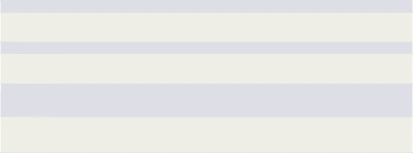 What
method(s) or design(s) does the project use to obtain its
information?
What
method(s) or design(s) does the project use to obtain its
information?
(Check all that apply. Select 'other' only if no other category applies.) HELP:
1. 1 Survey: In a sample survey, data are collected from a sample of a population to determine the incidence, distribution, and interrelation of naturally occurring events and conditions. The overriding concern in the sample survey strategy is to collect information in such a way that conclusions can be drawn about elements of the population that are not in the sample as well as about elements that are in the sample (source: United States General Accounting Office, Program Evaluation and Methodology Division. (1991). Designing evaluations (Pub. No. GAO/PEMD-10.1.4). Washington, DC: Author, p. 33. Retrieved March 27, 2008 from http://www.gao.gov/...pdf)
|
a. survey |
|
b. observation |
c. case studies |
d. focus groups |
e. secondary analysis |
f. meta-analysis |
g. intervention study—Experimental or randomized control design |
h. intervention study—Quasi-experimental design |
i. intervention study—Single-subject design |
j. qualitative interview |
k. other |
Specify (if other): |
What time dimension is associated with this study?
(Select only one. Select 'other' only if no other category applies.) HELP: Cross-sectional: Measurement taken at one point in time
Longitudinal: Repeated measurements taken over many time points
cross-sectional
longitudinal
other
Specify (if other):
(Limit: 1,000 characters)
 a.
Have there been any changes to your proposed plan and methods during
the current reporting period?
a.
Have there been any changes to your proposed plan and methods during
the current reporting period?
yes
no
If 'yes,' have these changes been discussed with your project officer?
yes
no
If 'yes,' in two or three sentences, explain the reason for the changes:
(Limit: 4,000 characters)
HELP: The reason for the changes in proposed plan and methods is very important and helps NIDILRR meet its monitoring reporting requirements.
 Describe
your overall progress in implementing this project during the
reporting period. Focus on what activities have been conducted and,
if applicable, describe any promising findings or 'lessons learned'
in the current reporting period.
Describe
your overall progress in implementing this project during the
reporting period. Focus on what activities have been conducted and,
if applicable, describe any promising findings or 'lessons learned'
in the current reporting period.
(Limit: 20,000 characters)
 HELP:
Indicate progress toward original goals. Ideally, your description
should include an update on ongoing activities, some reference to the
original timeline for these activities and milestones, and progress
toward these milestones.
HELP:
Indicate progress toward original goals. Ideally, your description
should include an update on ongoing activities, some reference to the
original timeline for these activities and milestones, and progress
toward these milestones.
 a.
Is the project meeting its original sampling goals?
a.
Is the project meeting its original sampling goals?
yes
no
N/A-project has yet to start
b. If 'no,' what is the contingency plan for how the project will proceed?
(Limit: 20,000 characters)
HELP: Include a detailed description of what you plan to do because you are having difficulty meeting your original sampling
goals. A contingency plan for a project that is not meeting its sample size goals must be approved by your NIDILRR Project Officer. Contingency plans must be developed and implemented with the aim of maximizing scientific integrity within the original goals and budget of your specific project.
Examples of contingency plans that could be implemented to help meet original sample size goals include:
Expansion of your target population and related inclusion criteria, so that a larger number of individuals is available for your project to sample.
Use of alternate sampling methods to supplement originally proposed methods.
 Use
of non-parametric statistics to analyze existing sample if strategies
to increase sample size fail.
Use
of non-parametric statistics to analyze existing sample if strategies
to increase sample size fail.
a. Do you have any significant problems or challenges to report, other than sample size?
 yes
yes
no
b. Other than sample size, briefly describe any significant problems or challenges you encountered, when they occurred, the actions you took to remedy them, and when these corrective actions were implemented.
 (Limit:
20,000 characters)
(Limit:
20,000 characters)
a. Did you report any problems or challenges in last year's APR?
yes
no
If 'yes,' please update us on the status of problems or challenges that you reported. Describe the problems or challenges, when they occurred, the actions you took to remedy them, when these corrective actions were implemented, and whether the problems or challenges were successfully resolved.
 (Limit:
20,000 characters)
(Limit:
20,000 characters)
Which main category, or stage of research, does this research project belong in? If this project includes research that can be categorized under more than one of the research stages, or research that progresses from one stage to another, you may specify more than one stage.
HELP:
1 Exploration and Discovery means the stage of research that generates hypotheses or theories by conducting new and refined analyses of data, producing observational findings, and creating other sources of research-based information. This research stage may include identifying or describing the barriers to and facilitators of improved
outcomes of individuals with disabilities, as well as identifying or describing existing practices, programs, or policies that are associated with important aspects of the lives of individuals with disabilities. Results achieved under this stage of research may inform the development of interventions or lead to evaluations of interventions or policies. The results of the exploration and discovery stage of research may also be used to inform decisions or priorities.
1 Intervention Development means the stage of research that focuses on generating and testing interventions that have the potential to improve outcomes for individuals with disabilities. Intervention development involves determining the active components of possible interventions, developing measures that would be required to illustrate outcomes, specifying target populations, conducting field tests, and assessing the feasibility of conducting a well-designed intervention study. Results from this stage of research may be used to inform the design of a study to test the efficacy of an intervention.
1 Intervention Efficacy means the stage of research during which a project evaluates and tests whether an intervention is feasible, practical, and has the potential to yield positive outcomes for individuals with disabilities. Efficacy research may assess the strength of the relationships between an intervention and outcomes, and may identify factors or
individual characteristics that affect the relationship between the intervention and outcomes. Efficacy research can inform decisions about whether there is sufficient evidence to support "scaling-up" an intervention to other sites and contexts. This stage of research can include assessing the training needed for wide-scale implementation of the intervention, and approaches to evaluation of the intervention in real world applications.
4. 1 Scale-Up Evaluation means the stage of research during which a project analyzes whether an intervention is effective in producing improved outcomes for individuals with disabilities when implemented in a real-world setting. During this stage of research, a project tests the outcomes of an evidence-based intervention in different settings. The project examines the challenges to successful replication of the intervention, and the circumstances and activities that contribute to successful adoption of the intervention in real-world settings. This stage of research may also include well- designed studies of an intervention that has been widely adopted in practice, but that lacks a sufficient evidence-base to demonstrate its effectiveness. |
a. Exploration and discovery |
b. Intervention development |
c. Intervention efficacy |
d. Scale-up evaluation |
25. Please select the primary impairment group or groups that is/are the focus of this project. (Check all that apply) HELP: This question asks about impairment group at the project level. Answers to this question are aggregated and used to present an overall picture of impairment groups that grantees focus on. |
a. Sensory disability |
b. Psychiatric disability |
c. Developmental/intellectual disability |
d. Physical disability |



 Contact
Technical Support Viewers & Plugins Logout
Contact
Technical Support Viewers & Plugins Logout
Development Projects
Reporting Period: 06/01/2016 to 05/31/2017
ARRT grantees should not complete this section. However, you will need to click "save and continue" or "save and exit" below before you can submit your APR form.
For each of your development projects, answer the following questions. Where appropriate, you may cut and paste information from your original grant proposal.
HELP: A development project is defined as the use of knowledge and understanding gained from research to create materials, devices, systems, or methods beneficial to the target population, including design and development of prototypes and processes. This definition is derived from the regulations governing the DRRP program: CFT 350.16 (development).
If you submitted an annual report last year, a record for each development project you listed has been imported into your current APR. For these records, the text "needs review" will appear in the "Date Completed" column. Please review these records by clicking on the "edit" link. After you "save," the system will update the date completed.
Please also add any research projects not currently listed in the table and delete any records that are no longer needed. The "Date Completed" column will display the date of the last save for each record.
Special instructions for Model Systems grantees participating in multisite collaborative module projects. Model Systems grantees participating in multisite collaborative module projects, whether as the lead or a contributor, should identify these projects in both the "short title" (75 characters) and "full title" (500 characters) fields. The lead grantee should enter the phrase "LEAD MODULE PROJECT" in all caps at the beginning of the field, followed by the project title. The lead grantee should determine exactly what the project title will be and inform the contributors. Contributors should enter "MODULE PROJECT" in all caps at the beginning of the field, followed by the project title exactly as provided by the lead grantee. The lead center should report on its own contributions to the project (e.g., their center's sample size to date, etc.) as well as the overall progress of the study (the sample size of the entire project to date, etc.). The other collaborating centers should report on their individual center's contribution to the study.
NOTE: If this is your first year, you will need to enter information for all of your projects.
For each project that has received Institutional Review Board approval, upload all relevant approval documents, including your own and any for subcontractors or partner sites participating in the project. (All relevant approval documents should be combined into a single file for upload.) Do not submit your report until you have uploaded all relevant IRB approval documents.
The attachment icon in the table below indicates projects for which you have uploaded an IRB approval document. An X indicates projects for which you still need to upload an IRB approval document.
You have currently entered 0 records.
Project ID |
Project Title |
IRB Status |
|
Add/Edit Record |
Delete Record |
Date Completed |
|
|
|
|
|||



 Contact
Technical Support Viewers & Plugins Logout
Contact
Technical Support Viewers & Plugins Logout
Development Projects
Reporting Period: 06/01/2016 to 05/31/2017
Title of development project
(Limit: 500 characters)
HELP: The project title should come from your grant application. NIDILRR performs key word or phrase searches of the title field to determine the total number of projects on specific topics.
 Name
of the Principal Investigator responsible for this project
Name
of the Principal Investigator responsible for this project
 If
applicable, name of the Co-Principal Investigator responsible for
this project
If
applicable, name of the Co-Principal Investigator responsible for
this project
 Project
start date
Project
start date
(enter as "mm/dd/yyyy")
 HELP:
Please verify the project start date.
HELP:
Please verify the project start date.
 Projected
(or actual) project end date
Projected
(or actual) project end date
(enter as "mm/dd/yyyy")
HELP: The anticipated end date of a project can change for various reasons; e.g., if obtaining IRB approval takes longer than expected.
a. What is the current status of your development project?
(Select only one)
on time
delayed
completed
not scheduled to start yet
dropped
If 'delayed,' by how many months?
If 'delayed,' what was the primary reason for the delay?
(Limit: 4,000 characters)
If 'dropped,' what was the major reason for dropping it?
(Limit: 4,000 characters)
 If
'dropped,' was this change discussed with your project officer?
If
'dropped,' was this change discussed with your project officer?
yes
 no
no
a. What is the Institutional Review Board status for this development project? (Select the best answer.)
(Select only one)
approved
pending
submitted
not yet submitted
N/A (choose this option if IRB Approval was not required)
If 'approved,' enter the IRB annual approval number
If 'approved,' enter the date of approval
(enter as "mm/dd/yyyy")
If 'approved,' is this your most recent IRB approval for this project?
HELP: NIDILRR needs to have the most recent date of IRB approval on file to meet departmental monitoring requirements.
yes
no
Are any subcontractors or partner sites working on this project?
yes
no
If 'yes,' do the subcontractors or partner sites have IRB approvals?
HELP: IRB subcontractor approval is important for monitoring human subjects issues.
yes
no
N/A
If 'N/A,' why?
Please upload a copy of your most recent IRB approval document. Your upload should include all relevant IRB approvals, including those for any subcontractors or partner sites participating in the project. (All relevant approval documents should be combined into a single file for upload.) Do not submit your report until you have uploaded all relevant IRB approvals. Use the 'Browse' button below to select the file you want to upload from your computer. You may upload files of the following types: PDF, DOC (Microsoft Word), GIF, and JPG.
HELP: NIDILRR is required to include official IRB approval documents as part of your official grant file.
 no
file selected
no
file selected
a. Briefly describe the objective(s) of this project
(Limit: 4,000 characters)
HELP: This information should come from the objectives description for this project in your original application.

Have there been substantial changes to the objective(s) for this project during the current reporting period?
HELP: If the original objectives for this project have changed, describe the new objectives.
yes
no
If 'yes,' have these changes been discussed with your project officer?
yes
no
If 'yes,' in one or two sentences, explain the reason for these changes.
(Limit: 1,000 characters)
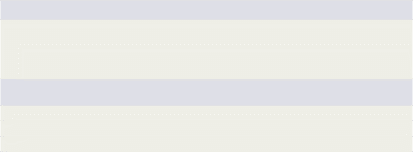 HELP:
NIDILRR is beginning to content analyze the responses to this
question in order to determine the most frequently reported reasons
why project objectives need to be changed. Understanding these
reasons will help improve NIDILRR's monitoring efforts and meet
departmental monitoring requirements.
HELP:
NIDILRR is beginning to content analyze the responses to this
question in order to determine the most frequently reported reasons
why project objectives need to be changed. Understanding these
reasons will help improve NIDILRR's monitoring efforts and meet
departmental monitoring requirements.
a. Based on the objectives listed in Question 8, what one NIDILRR Long Range Plan Domain does this project best fit in?
(Select only one)
health and function
employment
participation and community living
cross-cutting (specify two or more domains that apply)
If 'cross-cutting,' specify two or more domains that apply.
HELP: The cross-cutting domain shows that a disability development project often spans two or more Long-Range Plan domains because of the multi-disciplinary nature of disability research.
health and function
employment
 participation
and community living
participation
and community living
Below are the outcome-oriented goals you specified for your award. Select the one goal that this project helps to achieve.
If you have not yet entered outcome-oriented goals, please do so and then return to this question. If you revise your outcome- oriented goals, please return to this question and review your response.
(Select only one)
HELP: The goals you entered in 'Planning for Outcomes and Significant Outputs' section appear below. NIDILRR is interested in how projects map to grantee goals.
 [2]
Sample goal
[2]
Sample goal
In one or two sentences, briefly describe the potential users of your product or device.
 (Limit:
4,000 characters)
(Limit:
4,000 characters)
What stage of the development process are you in during this reporting period?
(Check all that apply)
HELP:
Proof of concept means the stage of development where key technical challenges are resolved. Stage activities may include recruiting study participants, verifying product requirements; implementing and testing (typically in controlled contexts) key concepts, components, or systems, and resolving technical challenges. A technology transfer plan is typically developed and transfer partner(s) identified; and plan implementation may have started. Stage results establish that a product concept is feasible.
Proof of product means the stage of development where a fully-integrated and working prototype, meeting critical technical requirements is created. Stage activities may include recruiting study participants, implementing and iteratively refining the prototype, testing the prototype in natural or less-controlled contexts, and verifying that all technical requirements are met. A technology transfer plan is typically ongoing in collaboration with the transfer partner(s). Stage results establish that a product embodiment is realizable.
Proof of adoption means the stage of development where a product is substantially adopted by its target population and used for its intended purpose. Stage activities typically include completing product refinements; and continued implementation of the technology transfer plan in collaboration with the transfer partner(s). Other activities include measuring users' awareness of the product, opinion of the product, decisions to adopt, use, and retain products; and identifying barriers and facilitators impacting product adoption. Stage results establish that a product is beneficial. |
a. Proof of concept |
b. Proof of product |
c. Proof of adoption |



Is this project at the commercialization phase?
yes
 no
no
 Overall,
how many target users are going to provide feedback on your product
or device?
Overall,
how many target users are going to provide feedback on your product
or device?
 a.
Have you reached the desired number of users you need to test your
product or device?
a.
Have you reached the desired number of users you need to test your
product or device?
yes
no
N/A-project has yet to start
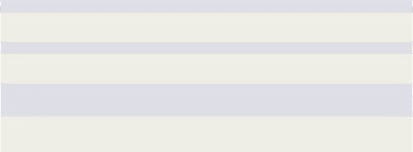 b.
If 'no,' indicate how many more users you need
b.
If 'no,' indicate how many more users you need
a. Have there been any changes to your proposed plan and methods during the current reporting period?
yes
no
If 'yes,' have these changes been discussed with your project officer?
yes
no
If 'yes,' in two or three sentences, explain the reason for the changes.
(Limit: 4,000 characters)
 HELP:
The reason for the changes in proposed plan and methods is very
important and helps NIDILRR meet its monitoring reporting
requirements.
HELP:
The reason for the changes in proposed plan and methods is very
important and helps NIDILRR meet its monitoring reporting
requirements.
Describe your overall progress in implementing this project during the reporting period. Focus on what activities have been conducted and, if applicable, describe any promising findings or 'lessons learned' in the current reporting period.
(Limit: 20,000 characters)
HELP: Indicate progress toward original goals. Ideally, your description should include an update on ongoing activities, some reference to the original timeline for these activities and milestones, and progress toward these milestones.
 a.
Do you have any significant problems or challenges to report?
a.
Do you have any significant problems or challenges to report?
yes
no
b. Briefly describe any significant problems or challenges you encountered, when they occurred, the actions you took to remedy them, and when these corrective actions were implemented.
 (Limit:
20,000 characters)
(Limit:
20,000 characters)
 a.
Did you report any problems or challenges in last year's APR?
a.
Did you report any problems or challenges in last year's APR?
yes
no
b. If 'yes,' please update us on the status of problems or challenges that you reported. Describe the problems or challenges, when they occurred, the actions you took to remedy them, when these corrective actions were implemented, and whether the problems or challenges were successfully resolved.
(Limit: 20,000 characters)
19. Please select the primary impairment group or groups that is/are the focus of this project. (Check all that apply) HELP: This question asks about impairment group at the project level. Answers to this question are aggregated and used to present an overall picture of impairment groups that grantees focus on. |
a. Sensory disability |
b. Psychiatric disability |
c. Developmental/intellectual disability |
d. Physical disability |



 Contact
Technical Support Viewers & Plugins Logout
Contact
Technical Support Viewers & Plugins Logout
Dissemination and Knowledge Translation Projects
Reporting Period: 06/01/2016 to 05/31/2017
In this section, please answer the following questions about your dissemination and knowledge translation activities and how they support each of the award-level goal(s) you specified in the outcomes planning section. If you specified more than one award-level outcome goal, you will be required to answer the same three questions again.
HELP: Knowledge translation is defined as the effective development, accumulation, synthesis, dissemination and transfer of scientifically-based disability and rehabilitation related knowledge, technologies, and applications to relevant stakeholders to inform disability and rehabilitation policy, improve practice, and enhance the lives of individuals with disabilities. If you submitted an annual report last year, a record for each project you listed has been imported into your current APR. Please review
these records by clicking on the 'edit' link. Please also add any projects not currently listed in the table and delete any records that are no longer needed.
RERC grantees should enter details on your technology transfer activities, based on the mandatory technology transfer plan(s) developed in the project's first year, for your research/development projects under their affiliated goals.
You have currently entered 1 record.
Goal number |
Dissemination and knowledge translation activities |
Add/Edit Record |
Date Completed |
2 |
|
Edit |
needs review |



 Contact
Technical Support Viewers & Plugins Logout
Contact
Technical Support Viewers & Plugins Logout
Dissemination and Knowledge Translation Projects
Outcome Goal: [2] Sample goal
Reporting Period: 06/01/2016 to 05/31/2017
Describe the dissemination and knowledge translation activities you are conducting, or plan to conduct, to support the achievement of the above goal. Rehabilitation Engineering Research Center (RERC) grantees should also describe their Technology Transfer activities pertaining to research/development projects affiliated with this goal.
(Limit: 5,000 characters)
 HELP:
It may be helpful to consult this Web site on knowledge translation:
http://www.ncddr.org/kt/products/ktintro.
HELP:
It may be helpful to consult this Web site on knowledge translation:
http://www.ncddr.org/kt/products/ktintro.
 For
the current reporting period, describe the progress you have made
in conducting the activities described in the first question.
Rehabilitation Engineering Research Center (RERC)
grantees should also describe their progress in implementing
their Technology Transfer Plan(s) pertaining to
research/development projects affiliated with this goal.
For
the current reporting period, describe the progress you have made
in conducting the activities described in the first question.
Rehabilitation Engineering Research Center (RERC)
grantees should also describe their progress in implementing
their Technology Transfer Plan(s) pertaining to
research/development projects affiliated with this goal.
(Limit: 5,000 characters)
 HELP:
Describe progress in conducting the dissemination and knowledge
translation activities related to this specific goal in your
application. Ideally, your description should include an update on
ongoing activities, some reference to the original timeline for
activities and milestones, progress toward milestones, and any
information on barriers or difficulties that have been experienced.
HELP:
Describe progress in conducting the dissemination and knowledge
translation activities related to this specific goal in your
application. Ideally, your description should include an update on
ongoing activities, some reference to the original timeline for
activities and milestones, progress toward milestones, and any
information on barriers or difficulties that have been experienced.
a. Do you have any problems or challenges to report?
yes
no
b. If you encountered problems or challenges in the current reporting period, what actions have you taken to address them? Describe the problems or challenges, when they occurred, the actions you took to remedy them, when these corrective actions were implemented, and whether the problems or challenges were successfully resolved.
(Limit: 5,000 characters)



 Contact
Technical Support Viewers & Plugins Logout
Contact
Technical Support Viewers & Plugins Logout
Fellows
Reporting Period: 06/01/2016 to 05/31/2017
If you submitted an annual report last year, a record for each fellow you listed has been imported into your current APR. For these records, the text "needs review" will appear in the "Date Completed" column. Please review these records by clicking on the "edit" link. After you "save" the system will update the date completed.
Please also add any fellows not currently listed in the table and delete any records that are no longer needed. The "Date Completed" column will display the date of the last save for each record.
NOTE: If this is your first year, you will need to enter information for all of your fellows. You have currently entered 0 records.
Last Name |
First Name |
Add/Edit Record |
Delete Record |
Date Completed |
|
|
|
|
|



 Contact
Technical Support Viewers & Plugins Logout
Contact
Technical Support Viewers & Plugins Logout
Fellows
Reporting Period: 06/01/2016 to 05/31/2017
 For
each current fellow, enter the following
information. A current fellow is a fellow who worked on the
award at any time during the current reporting period.
For
each current fellow, enter the following
information. A current fellow is a fellow who worked on the
award at any time during the current reporting period.
Last name of fellow
HELP: Be sure not to enter duplicate records for staff members already listed. Typographical errors or misspellings will result in duplicate records for the same staff member. NIDILRR uses the name fields to generate counts of staff members. Duplicate records will result in inaccurate counts.
First name of fellow
 HELP:
Be sure not to enter duplicate records for staff members already
listed. Typographical errors or misspellings will result in
duplicate records for the same staff member. NIDILRR uses the name
fields to generate counts of staff members. Duplicate records will
result in inaccurate counts.
HELP:
Be sure not to enter duplicate records for staff members already
listed. Typographical errors or misspellings will result in
duplicate records for the same staff member. NIDILRR uses the name
fields to generate counts of staff members. Duplicate records will
result in inaccurate counts.
 Fellows—Demographic/diversity
information
Fellows—Demographic/diversity
information
The next series of questions asks for demographic information about the particular fellow. Submitting this demographic information is voluntary. There are no adverse consequences if you chose not to submit it. NIDILRR uses this information in aggregate reports to gauge whether our programs and other opportunities in disability and rehabilitation research are fairly reaching and benefiting everyone regardless of demographic diversity and to ensure that those in underrepresented groups have the same knowledge of and access to programs, meetings, vacancies, and other research and educational opportunities as everyone else.
Is this person of Hispanic or Latino ethnicity?
HELP: Categories for ethnicity are established by OMB. You are asked to indicate if the staff member is of Hispanic or Latino ethnicity. Hispanic or Latino is defined as 'A person of Cuban, Mexican, Puerto Rican, Cuban, South or Central American, or other Spanish culture or origin, regardless of race.' (Office of Management and Budget, Revisions to the standards for classification of federal data on race and ethnicity. Federal Register, October 30, 1997. Available at
http://www.whitehouse.gov/...html.
yes
no
Please indicate the racial designation for this person
(Select one or more)
HELP: Categories for race are established by OMB.
American Indian or Alaska Native. A person having origins in any of the original peoples of North and South America (including Central America), and who maintains tribal affiliation or community attachment.
Asian. A person having origins in any of the original peoples of the Far East, Southeast Asia, or the Indian subcontinent including, for example, Cambodia, China, India, Japan, Korea, Malaysia, Pakistan, the Philippine Islands, Thailand, and Vietnam.
Black or African American. A person having origins in any of the black racial groups of Africa.
Native Hawaiian or Other Pacific Islander. A person having origins in any of the original peoples of Hawaii, Guam, Samoa, or other Pacific Islands.
White. A person having origins in any of the original peoples of Europe, the Middle East, or North Africa.
(Office of Management and Budget, Revisions to the standards for classification of federal data on race and ethnicity. Federal Register, October 30, 1997. Available at http://www.whitehouse.gov/...html.)
American Indian or Alaska Native
Asian
Black or African American
Native Hawaiian or Other Pacific Islander
White
Does this person have a declared disability?
yes
 no
no
 Select
the highest degree earned by the fellow before starting the program
Select
the highest degree earned by the fellow before starting the program
(Select only one. Select 'other' only if no other category applies.)
Master's
Doctorate
MD
DO
JD
other
 joint
degree (e.g., MD, Ph.D., etc.) Specify (if 'joint degree'):
joint
degree (e.g., MD, Ph.D., etc.) Specify (if 'joint degree'):
5.1 Please tell us the discipline/subject area in which the highest degree was received
(Limit: 1,000 characters)
When did the fellow start the program?
(enter as "mm/dd/yyyy")
 What
is the fellow's anticipated end date?
What
is the fellow's anticipated end date?
 (enter
as "mm/dd/yyyy")
(enter
as "mm/dd/yyyy")
 Name
of fellowship program
Name
of fellowship program
HELP: Please select 'ARRT' for all fellows who receive the majority of their funding from ARRT funds.
ARRT
other Specify (if other):
9.1 Briefly describe the ARRT fellow's area of focus (NOTE: This item is for ARRT fellows only) (Limit: 3,500 characters) HELP: Summarize specific areas in which the fellow is receiving advanced research training. |
|
a. Please describe the methods that the ARRT grant used to recruit this fellow. (Limit: 1,000 characters) |
|
b. Please provide the institution of higher education and the specific Department from which the ARRT fellow received their doctoral degree. |
|
c. Please provide the name of the faculty member who is serving as the primary mentor for this fellow under the ARRT grant. |
|
d. Please describe the institution of higher education, and the relevant College or Department, of the faculty member who is serving as the primary mentor for this fellow under the ARRT grant. |
|
e. Please provide the title of the position of the faculty member who is serving as the primary mentor for this fellow under the ARRT grant. |
|
10. Briefly describe the non-ARRT fellow's major role or contribution to grant/award in the current reporting period (NOTE: This item is for all non-ARRT fellows only)
(Limit: 3,500 characters)
HELP: Describe what the non-ARRT fellow is doing that is central to the achievement of grant activities.




 Contact
Technical Support Viewers & Plugins Logout
Contact
Technical Support Viewers & Plugins Logout
Graduate Students
Reporting Period: 06/01/2016 to 05/31/2017
If you submitted an annual report last year, a record for each graduate student you listed has been imported into your current APR. For these records, the text "needs review" will appear in the "Date Completed" column. Please review these records by clicking on the "edit" link. After you "save," the system will update the date completed.
Please also add any graduate students not currently listed in the table and delete any records that are no longer needed. The "Date Completed" column will display the date of the last save for each record.
NOTE: If this is your first year, you will need to enter information for all of your graduate students. You have currently entered 0 records.
Last Name |
First Name |
Add/Edit Record |
Delete Record |
Date Completed |
|
|
|
|
|



 Contact
Technical Support Viewers & Plugins Logout
Contact
Technical Support Viewers & Plugins Logout
Graduate Students
Reporting Period: 06/01/2016 to 05/31/2017
 Enter
the following
information
for all graduate students you have working on your award in the
current reporting period who are receiving training and/or
satisfying requirements in conjunction with an advanced degree.
(NOTE:
Do not include graduate students working on award for pay only.)
Enter
the following
information
for all graduate students you have working on your award in the
current reporting period who are receiving training and/or
satisfying requirements in conjunction with an advanced degree.
(NOTE:
Do not include graduate students working on award for pay only.)
Last name of graduate student
HELP: Be sure not to enter duplicate records for staff members already listed. Typographical errors or misspellings will result in duplicate records for the same staff member. NIDILRR uses the name fields to generate counts of staff members. Duplicate records will result in inaccurate counts.
First name of graduate student
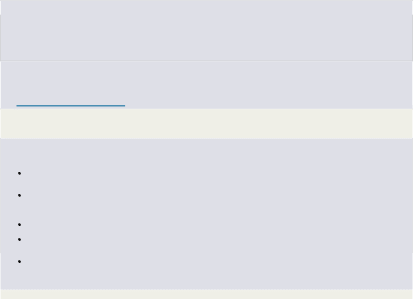 HELP:
Be sure not to enter duplicate records for staff members already
listed. Typographical errors or misspellings will result in
duplicate records for the same staff member. NIDILRR uses the name
fields to generate counts of staff members. Duplicate records will
result in inaccurate counts.
HELP:
Be sure not to enter duplicate records for staff members already
listed. Typographical errors or misspellings will result in
duplicate records for the same staff member. NIDILRR uses the name
fields to generate counts of staff members. Duplicate records will
result in inaccurate counts.
 Graduate
Students—Demographic/diversity information
Graduate
Students—Demographic/diversity information
The next series of questions asks for demographic information about the particular graduate student. Submitting this demographic information is voluntary. There are no adverse consequences if you chose not to submit it. NIDILRR uses this information in aggregate reports to gauge whether our programs and other opportunities in disability and rehabilitation research are fairly reaching and benefiting everyone regardless of demographic diversity and to ensure that those in underrepresented groups have the same knowledge of and access to programs, meetings, vacancies, and other research and educational opportunities as everyone else.
Is this person of Hispanic or Latino ethnicity?
HELP: Categories for ethnicity are established by OMB. You are asked to indicate if the staff member is of Hispanic or Latino ethnicity. Hispanic or Latino is defined as 'A person of Cuban, Mexican, Puerto Rican, Cuban, South or Central American, or other Spanish culture or origin, regardless of race.' (Office of Management and Budget, Revisions to the standards for classification of federal data on race and ethnicity. Federal Register, October 30, 1997. Available at
http://www.whitehouse.gov/...html.
yes
no
Please indicate the racial designation for this person
(Select one or more)
HELP: Categories for race are established by OMB.
American Indian or Alaska Native. A person having origins in any of the original peoples of North and South America (including Central America), and who maintains tribal affiliation or community attachment.
Asian. A person having origins in any of the original peoples of the Far East, Southeast Asia, or the Indian subcontinent including, for example, Cambodia, China, India, Japan, Korea, Malaysia, Pakistan, the Philippine Islands, Thailand, and Vietnam.
Black or African American. A person having origins in any of the black racial groups of Africa.
Native Hawaiian or Other Pacific Islander. A person having origins in any of the original peoples of Hawaii, Guam, Samoa, or other Pacific Islands.
White. A person having origins in any of the original peoples of Europe, the Middle East, or North Africa.
(Office of Management and Budget, Revisions to the standards for classification of federal data on race and ethnicity. Federal Register, October 30, 1997. Available at http://www.whitehouse.gov/...html.)



 American
Indian or Alaska Native
American
Indian or Alaska Native
Asian
Black or African American
Native Hawaiian or Other Pacific Islander
White
Does this person have a declared disability?
yes
 no
no
 Select
the highest degree earned by the graduate student before starting
the program.
Select
the highest degree earned by the graduate student before starting
the program.
(Select only one. Select 'other' only if no other category applies.)
Bachelor's
Master's
Doctorate
MD
DO
JD
other
 joint
degree (e.g., MD, Ph.D., etc.) Specify (if 'joint degree'):
joint
degree (e.g., MD, Ph.D., etc.) Specify (if 'joint degree'):
5.1 Please tell us the discipline/subject area in which the highest degree was received
(Limit: 1,000 characters)
6.1 When did the graduate student start working on the award?
(enter as "mm/dd/yyyy")
HELP: This is a measure of program flow; e.g., how many students started in a particular year? How many students were in the program at time x of a given year?
 7.1
When will
the graduate
student stop
working on
the award?
7.1
When will
the graduate
student stop
working on
the award?
(enter as "mm/dd/yyyy")
 HELP:
The answers to this question serve as a measure of program completion
rate at various points in time.
HELP:
The answers to this question serve as a measure of program completion
rate at various points in time.
 8.1
In two
to three
sentences, briefly
describe the
graduate student's
major role
or contribution
to grant/award
in the
current reporting period
8.1
In two
to three
sentences, briefly
describe the
graduate student's
major role
or contribution
to grant/award
in the
current reporting period
(Limit: 1,000 characters)
Performance of Fellows and Graduate Students
Reporting Period: 06/01/2016 to 05/31/2017
In this section we ask about the performance of your fellows and graduate students. List the publications based on NIDILRR-funded research, published in the current reporting period, that were authored by fellows and/or graduate students who are currently part of your training program or have been in the past 3 years. The fellow or graduate student need not have been the first author, so long as he or she is listed among the authors of the publication. For fellows in the ARRT program, this will include all publications that fellows contributed to as part of their participation in the program.
Include only publications supported by NIDILRR funding that are related to the objectives of the current award.
The last column indicates whether the journal title that you entered is contained in the ISI® database. NIDILRR uses this database to determine which citations entered by grantees can be included in its performance measures. It is extremely important that journal titles be entered correctly (e.g., with no abbreviations or spelling errors) so that your citations, where appropriate, will match the ISI database and can be counted.
After entering a journal title or proceeding, check the last column of the summary table to see whether the title you entered matches an entry in the ISI database. If it does not, you may choose "look up" to view a list of entries in the database. If you have entered the title incorrectly, select the correct title and click on "OK" to change it.
Only journal articles and proceedings will have matches in the ISI database.
 Add award-related publication produced by
fellows
Add award-related publication produced by
fellows
 Add award-related publication produced by
graduate students
Add award-related publication produced by
graduate students



 Contact
Technical Support Viewers & Plugins Logout
Contact
Technical Support Viewers & Plugins Logout
Performance of Fellows and Graduate Students
Reporting Period: 06/01/2016 to 05/31/2017
 Enter
the following information
on award-related publications produced by fellows in the current
reporting period.
Enter
the following information
on award-related publications produced by fellows in the current
reporting period.
1.1 Name of fellow (Last name, First initial, Middle initial)
HELP: Be sure not to enter duplicate records for staff members already listed. Typographical errors or misspellings will result in duplicate records for the same staff member. NIDILRR uses the name fields to generate counts of staff members. Duplicate records will result in inaccurate counts.
, . .
2.1 Provide a full citation for this publication. HELP: NIDILRR generates counts of the types of publications being produced. NARIC receives this information in order to better track the types of publications being produced by NIDILRR grantees. |
Type of publication a. journal article or periodical |
Author(s) Enter as '[Last name], [First initial].' |
Year published |
Title |
Title of journal |
Volume |
Page numbers |
b. Is this a peer-reviewed publication?
NOTE: This question will be displayed only if the publication type in 1a = either "journal article or periodical" or "proceedings."
yes
 no
no
 Indicate
the time frame or award cycle when the NIDILRR-funded research and
related activity described in the publication was conducted.
Indicate
the time frame or award cycle when the NIDILRR-funded research and
related activity described in the publication was conducted.
HELP: Indicate the funding cycle when the research or development work described in the publication was conducted.
current funding cycle
immediate past funding cycle
 previous
funding cycle (not consecutive)
previous
funding cycle (not consecutive)
Indicate whether the publication has been sent to NARIC for inclusion in REHABDATA.
(To check the status of this publication in NARIC, visit http://www.naric.com/research/rehab/.)
HELP: The National Rehabilitation Information Center (NARIC) is NIDILRR's output clearinghouse. One of NARIC's functions is to collect and store all of the outputs produced by grantees. NIDILRR uses the answer to this question as part of a report for NARIC that lists outputs for all grantees.
yes
no
Was this publication produced as a direct result of receiving funding for this grant; i.e., grant number Sample?
HELP: This helps NIDILRR determine how many publications were produced as a direct result of NIDILRR funding.
yes
no




 Contact
Technical Support Viewers & Plugins Logout
Contact
Technical Support Viewers & Plugins Logout
Performance of Fellows and Graduate Students
Reporting Period: 06/01/2016 to 05/31/2017
 Enter
the following information
on award-related publications produced by graduate students in the
current reporting period.
Enter
the following information
on award-related publications produced by graduate students in the
current reporting period.
1.1 Name of graduate student (Last name, First initial, Middle initial)
HELP: Be sure not to enter duplicate records for staff members already listed. Typographical errors or misspellings will result in duplicate records for the same staff member. NIDILRR uses the name fields to generate counts of staff members. Duplicate records will result in inaccurate counts.
, . .
2.1 Provide a full citation for this publication. HELP: NIDILRR generates counts of the types of publications being produced. NARIC receives this information in order to better track the types of publications being produced by NIDILRR grantees. |
Type of publication a. journal article or periodical |
Author(s) Enter as '[Last name], [First initial].' |
Year published |
Title |
Title of journal |
Volume |
Page numbers |
b. Is this a peer-reviewed publication?
NOTE: This question will be displayed only if the publication type in 1a = either "journal article or periodical" or "proceedings."
yes
 no
no
 Indicate
the time frame or award cycle when the NIDILRR-funded research and
related activity described in the publication was conducted.
Indicate
the time frame or award cycle when the NIDILRR-funded research and
related activity described in the publication was conducted.
HELP: Indicate the funding cycle when the research or development work described in the publication was conducted.
current funding cycle
immediate past funding cycle
 previous
funding cycle (not consecutive)
previous
funding cycle (not consecutive)
Indicate whether the publication has been sent to NARIC for inclusion in REHABDATA.
(To check the status of this publication in NARIC, visit http://www.naric.com/research/rehab/.)
HELP: The National Rehabilitation Information Center (NARIC) is NIDILRR's output clearinghouse. One of NARIC's functions is to collect and store all of the outputs produced by grantees. NIDILRR uses the answer to this question as part of a report for NARIC that lists outputs for all grantees.
yes
no
Additional Information
Reporting Period: 06/01/2016 to 05/31/2017
1. Are there any other accomplishments or outputs from your capacity-building efforts that you would like to tell NIDILRR about (e.g., poster presentations, successful other grant applications, etc.)?
(Limit: 10,000 characters)




 Contact
Technical Support Viewers & Plugins Logout
Contact
Technical Support Viewers & Plugins Logout
Training Projects
(All except ADA and ARRT)
Reporting Period: 06/01/2016 to 05/31/2017
ARRT grantees should not complete this section. However, you will need to click "save and continue" or "save and exit" below before you can submit your APR form.
If you proposed specific training projects in your original proposal, please report on those here. If you did not, you may regroup your training activities into projects of like tasks.
If you submitted an annual report last year, a record for each training project you listed has been imported into your current APR. For these records, the text "needs review" will appear in the "Date Completed" column. Please review these records by clicking on the "edit" link. After you "save," the system will update the date completed.
NOTE: If this is your first year, you will need to enter information for all of your projects. You have currently entered 0 records.
Project ID |
Project Title |
Add/Edit Record |
Delete Record |
Date Completed |
|
|
|
|
|



 Contact
Technical Support Viewers & Plugins Logout
Contact
Technical Support Viewers & Plugins Logout
Training Projects
Reporting Period: 06/01/2016 to 05/31/2017
Enter the project title
(Limit: 1,000 characters)
HELP: The project title should come from your grant application. NIDILRR performs key word or phrase searches of the title field to determine the total number of projects on specific topics.

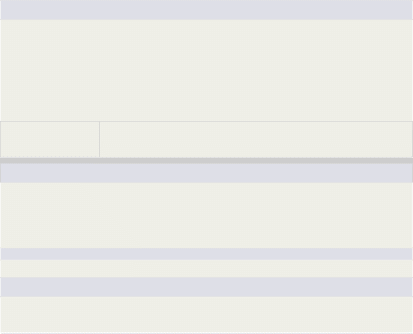 Name
of person responsible for the project
Name
of person responsible for the project
 Type
of project
Type
of project
(Select only one. Select 'other' only if no other category applies.)
workshop
webcast
presentation
training course
curricula development
training manual development
planning, conducting, or sponsoring a conference
other
Specify (if other):
(Limit: 1,000 characters)
a. What is the status of the project?
(Select only one)
on time
delayed
completed
not scheduled to start yet
dropped
If 'delayed,' by how many months?
If 'delayed,' what was the primary reason for the delay?
(Limit: 4,000 characters)
If 'dropped,' what was the major reason for dropping it?
(Limit: 4,000 characters)
If 'dropped,' was this change discussed with your project officer?
yes
 no
no
 a.
Briefly describe the objective(s) of this project.
a.
Briefly describe the objective(s) of this project.
(Limit: 4,000 characters)
HELP: This information should come from the objectives description for this project in your original application.
Have there been substantial changes to the objective(s) for this project during the current reporting period?
HELP: If the original objectives for this project have changed, describe the new objectives.
yes
no
If 'yes,' have these changes been discussed with your project officer?
yes
no
If 'yes,' in one or two sentences, explain the reason for these changes.
(Limit: 1,000 characters)
(Choose
no more than two. Select 'other' only if no other category
applies.) HELP:
NIDILRR aggregates information on target audiences across all
grantees. We limit the response to two audiences because we want
to develop frequency distributions on the primary audiences our
grantees serve.
a.
Researchers
b.
Practitioners/clinicians
c.
Service providers
d.
Educators
e.
Policy experts
f.
Federal & non-federal partners
g.
Industry representatives and/or product developers
h.
Employers
i.
Media
j.
Students
Select the 1-2 primary target audiences for this project.

k. Consumer advocates |
l. Individuals with disabilities and/or family members |
m. Other |
Specify (if other): |
Which of your outcome-oriented goals does this project help to achieve?
If you have not yet entered outcome-oriented goals, please do so and then return to this question. If you revise your outcome- oriented goals, please return to this question and review your response.
(Select only one)
[2] Sample goal
8. What steps have you taken to evaluate the impact of this training project? (Check all that apply. Select 'other' only if no other category applies.) HELP: One of the best ways to assess the effectiveness of a training activity is through the use of a pre/post test design, which demonstrates change in awareness or attitudes or knowledge. If that is not possible due to resource or time constraints, grantees are encouraged to talk with the staff of the Center on Knowledge Translation for Disability and Rehabilitation Research (KTDRR). |
a. None |
b. Key informant interviews |
c. Customer satisfaction survey |
d. Pre/post design |
e. Quasi-experimental |
f. Other |
Specify (if other): (Limit: 1,000 characters) |
9. What did you learn from this evaluation?
(Limit: 5,000 characters)




 Contact
Technical Support Viewers & Plugins Logout
Contact
Technical Support Viewers & Plugins Logout
 OMB
No.:
0985-0050
|
Expiration
OMB
No.:
0985-0050
|
Expiration
National Institute on Disability, Independent Living, Date: xx/xx/2019
and Rehabilitation Research
 Annual
Performance
Report
Annual
Performance
Report
APR < Main Menu Logged in as: Sample | Logout
Technical Assistance Activities
(All except ADA and ARRT)
Reporting Period: 06/01/2016 to 05/31/2017

 In
this section, we ask about your technical assistance activities in
the current reporting period.
In
this section, we ask about your technical assistance activities in
the current reporting period.
In the current reporting period, what was the most frequently used method of delivering technical assistance?
(Select only one. Select 'other' only if no other category applies.)
phone consultation
e-mail
the Web
in-person
other
Specify (if other):
(Limit: 1,000 characters)
we want to develop frequency distributions on the primary audiences our grantees serve.
2. From the list below, select the primary audiences that most often requested technical assistance.
(Choose up to 2 audiences. Select 'other' only if no other category applies.)
HELP: NIDILRR aggregates information on target audiences across all grantees. We limit the response to two audiences because
a. Researchers
b. Practitioners/clinicians
c. Service providers
d. Educators
e. Policy experts
f. Federal & non-federal partners
g. Industry representatives and/or product developers
h. Employers
i. Media
j. Consumer advocates
k. Individuals with disabilities and/or family members
l. Other
Specify (if other):
Briefly describe the nature of the technical assistance you provided to the audience(s) identified in question 2.
(Limit: 1,000 characters)
Briefly comment on how the technical assistance provided in the current reporting period related to the goals of your award.
(Limit: 1,000 characters)
HELP: In the 'Planning for Outcomes and Significant Outputs, Outcome-Oriented Goals' section of the APR, you specified the major goals of your award. Describe how the technical assistance activities you provided in the current reporting period contributed to the achievement of these goals.




 Contact
Technical Support Viewers & Plugins Logout
Contact
Technical Support Viewers & Plugins Logout
Additional Notes
(All except ARRT, KT, and ADA)
Reporting Period: 06/01/2016 to 05/31/2017
Please use this space to report any additional information on your current projects or activities that you would like NIDILRR to know.
(Limit: 5,000 characters)
HELP: This question gives grantees an opportunity to tell NIDILRR anything else relating to their projects or activities that does not fit in the responses to the previous questions.




 Contact
Technical Support Viewers & Plugins Logout
Contact
Technical Support Viewers & Plugins Logout
Clinical Care
(Applies to MS only)
Provide the following information for your entire grant, not for each of your projects.
Reporting Period: 06/01/2016 to 05/31/2017
Number of new patients enrolled in the database during the reporting period
 HELP:
If the answer is 'none,' please enter a '0' in the box.
HELP:
If the answer is 'none,' please enter a '0' in the box.
 Number
of patients followed up during the reporting period
Number
of patients followed up during the reporting period
 HELP:
If the answer is 'none,' please enter a '0' in the box.
HELP:
If the answer is 'none,' please enter a '0' in the box.
Briefly describe how R&D findings of your current Model Systems grant are used, or their anticipated use, in the clinical care setting
(Limit: 1,000 characters)



 Contact
Technical Support Viewers & Plugins Logout
Contact
Technical Support Viewers & Plugins Logout
Knowledge Translation Awards
(Applies to KT Only)
Reporting Period: 06/01/2016 to 05/31/2017
KT Projects will be asked to group related activities or tasks into the categories below. Please use the definitions to select the type of project that best applies. NOTE: Definitions are taken from the "Disability and Rehabilitation Research Projects and Centers Program; Final Rule", Federal Register, Vol. 62, No. 25, February 6, 1997 (http://www.gpoaccess.gov/fr/index.html)
 The
APR system will allow
you to report as many different types of projects, and as many of
each type, as necessary. Most grantees will
need to report multiple types of projects.
The
APR system will allow
you to report as many different types of projects, and as many of
each type, as necessary. Most grantees will
need to report multiple types of projects.
Research activities focused on systematic study directed toward advancing knowledge of KT or technology transfer, testing an hypothesis, or evaluating the effectiveness of a new KT or technology transfer strategy or approach (e.g., refining and testing conceptual or theoretical models of KT or tech transfer, developing or evaluating standards of evidence grading; and evaluating the effectiveness of dissemination or technology transfer strategies).
(NOTE: Questions in this section are the same as those listed in the Research Projects Section above.)
Development activities focused on using knowledge and understanding gained from research to create KT or technology transfer related materials, devices, systems, or methods beneficial to the target population, including design and development of prototypes, processes and information products.
(NOTE: Questions in this section are the same as those listed in the Development Projects Section above.)
Dissemination and knowledge translation activities focused on the systematic exchange, synthesis, distribution, and ethically sound application of information or knowledge through a variety of ways for potential users or beneficiaries.
(NOTE: Questions in this section are the same as those listed in the Dissemination and Knowledge Translation Projects section above.)
Training activities focused on conducting a planned and systematic sequence of supervised instruction on KT or technology transfer that is designed to impart predetermined skills and knowledge.
(NOTE: Questions in this section are the same as those listed in the Training Projects section above.)
Technical Assistance activities focused on providing expertise or information on KT or technology transfer for use in problem solving.
(NOTE: Questions in this section are the same as those listed in the Technical Assistance activities section above.)
Other KT or Tech Transfer activities



 Contact
Technical Support Viewers & Plugins Logout
Contact
Technical Support Viewers & Plugins Logout
Knowledge Translation Awards
Reporting Period: 06/01/2016 to 05/31/2017
In this section, we ask you to answer some basic questions about your Knowledge Translation (KT) projects, including Technology Transfer projects where applicable. For purposes of the APR, a "KT project" can refer to a designated project that you proposed in your initial application or, if you did not propose projects, to a collection of related activities or tasks that you group together as a project for reporting. You are not required to group activities or tasks in the same way they were grouped in the original proposal. Whichever applies to you, the designation you use to identify projects will be carried forward to future APRs. The maximum number of KT projects you can report on is 10.
If you submitted an annual report last year, a record for each project listed has been imported into your current APR. For these records, the text "needs review" will appear in the "Date Completed" column. Please review these records by clicking on the "edit" link. After you "save," the system will update the date completed.
Please also add any projects not currently listed in the table and delete any records that are no longer needed. The "Date Completed" column will display the date of the last save for each record.
NOTE: If this is your first year, you will need to enter information for all of your projects. You have currently entered 0 records.
Project ID |
Project Title |
Add/Edit Record |
Delete Record |
Date Completed |
|
|
|
|
|



 Contact
Technical Support Viewers & Plugins Logout
Contact
Technical Support Viewers & Plugins Logout
 Knowledge
Translation Awards
Knowledge
Translation Awards
Title of this KT project
(Limit: 500 characters)
Reporting Period: 06/01/2016 to 05/31/2017
Name of person responsible for this project
 Project
start date
Project
start date
(enter as "mm/dd/yyyy")
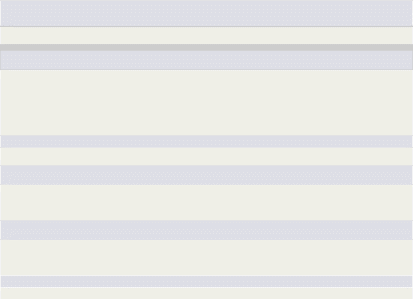 HELP:
Please verify the project start date.
HELP:
Please verify the project start date.
 Actual
or projected project end date
Actual
or projected project end date
(enter as "mm/dd/yyyy")
HELP: The anticipated end date of a project can change for various reasons.
a. What is the current status of this project?
(Select only one)
on time
delayed
completed
not scheduled to start yet
dropped
If 'delayed,' by how many months?
If 'delayed,' what was the primary reason for the delay?
(Limit: 4,000 characters)
If 'dropped,' what was the major reason for dropping it?
(Limit: 4,000 characters)
If 'dropped,' was this change discussed with your project officer?
yes

 no
no
6.1 a. Briefly describe the objective(s) of this project
(Limit: 4,000 characters)
HELP: This information should come from the objectives description for this project in your original application.
Have there been substantial changes to the objective(s) for this project during the current reporting period?
HELP: If the original objectives for this project have changed, describe the new objectives.
yes
no
If 'yes,' have these changes been discussed with your project officer?
yes
no
If 'yes,' in one or two sentences, explain the reason for these changes.
(Limit: 1,000 characters)
HELP: NIDILRR is beginning to content analyze the responses to this question in order to determine the most frequently reported reasons why project objectives need to be changed. Understanding these reasons will help improve NIDILRR's monitoring efforts and meet departmental monitoring requirements.
7.1 Describe your overall progress in implementing this project during the current reporting period (including any significant problems or challenges you encountered and the actions you took to remedy them).
(Limit: 20,000 characters)
HELP: Indicate progress toward original goals. Ideally, your description should include an update on ongoing activities, some reference to the original timeline for these activities and milestones, and progress toward these milestones.
8.1 Describe any preliminary findings or 'lessons learned' in the current reporting period.
 (Limit:
5,000 characters)
(Limit:
5,000 characters)
 9.1
Briefly describe
any significant
problems or
challenges you
encountered in
the current
performance period
conducting your
KT activities and summarize the actions you have taken to
address them.
9.1
Briefly describe
any significant
problems or
challenges you
encountered in
the current
performance period
conducting your
KT activities and summarize the actions you have taken to
address them.
 (Limit:
20,000 characters)
(Limit:
20,000 characters)
Please update us on the status of problems or challenges that you reported in previous Annual Performance Reports.
(Limit: 20,000 characters)




 Contact
Technical Support Viewers & Plugins Logout
Contact
Technical Support Viewers & Plugins Logout
ADAs - Training Projects
Reporting Period: 06/01/2016 to 05/31/2017
If you proposed specific training projects in your original proposal, please report on those here. If you did not, you may regroup your training activities into projects of like tasks.
If you submitted an annual report last year, a record for each project you listed has been imported into your current APR. For these records, the text "needs review" will appear in the "Date Completed" column. Please review these records by clicking on the "edit" link. After you "save," the system will update the date completed.
NOTE: If this is your first year, you will need to enter information for all of your projects. You have currently entered 0 records.
Project ID |
Project Title |
Add/Edit Record |
Delete Record |
Date Completed |
|
|
|
|
|



 Contact
Technical Support Viewers & Plugins Logout
Contact
Technical Support Viewers & Plugins Logout
ADAs - Training Projects
Reporting Period: 06/01/2016 to 05/31/2017
Enter the project title
(Limit: 1,000 characters)
HELP: The project title should come from your grant application. NIDILRR performs key word or phrase searches of the title field to determine the total number of projects on specific topics.
 Name
of person responsible for the project
Name
of person responsible for the project
 Type
of project
Type
of project
(Select only one. Select 'other' only if no other category applies.)
workshop
webcast
presentation
training course
curricula development
training manual development
planning, conducting, or sponsoring a conference
distance learning curricula
other
Specify (if other):
 (Limit:
1,000 characters)
(Limit:
1,000 characters)
 a.
What is the status of the project?
a.
What is the status of the project?
(Select only one)
on time
delayed
completed
not scheduled to start yet
dropped
b. If 'delayed,' state the major reason for the delay
 (Limit:
4,000 characters)
(Limit:
4,000 characters)
In one or two sentences, briefly describe the objective(s) of the project
(Limit: 4,000 characters)
 HELP:
This information should come from the objectives description for this
project in your original application.
HELP:
This information should come from the objectives description for this
project in your original application.
6. Select the 1-2 primary target audiences for this project. (Choose no more than two. Select 'other' only if no other category applies.) HELP: NIDILRR aggregates information on target audiences across all grantees. We limit the response to two audiences because we want to develop frequency distributions on the primary audiences our grantees serve. |
a. Researchers |
b. Practitioners/clinicians |
c. Service providers |
d. Educators |
e. Policy experts |
f. Federal & non-federal partners |
g. Industry representatives and/or product developers |
h. Employers |
i. Media |
j. Students |
k. Consumer advocates |
l. Individuals with disabilities and/or family members |
m. Business groups |
n. State/local government agencies |
o. Code officials responsible for physical accessibility requirements |
p. Architects and design professionals |
q. Attorneys or other legal professionals |
r. Other |
Specify (if other): |
|
7. What steps have you taken to evaluate the impact of this training project? (Check all that apply. Select 'other' only if no other category applies.) |
a. None |
b. Key informant interviews |
c. Customer satisfaction survey |
d. Pre/post design |
e. Quasi-experimental |
f. Other |
Specify (if other): (Limit: 1,000 characters) |
|
 What
did you learn from this evaluation?
What
did you learn from this evaluation?
(Limit: 5,000 characters)




 Contact
Technical Support Viewers & Plugins Logout
Contact
Technical Support Viewers & Plugins Logout
 OMB
No.:
0985-0050
|
Expiration
OMB
No.:
0985-0050
|
Expiration
National Institute on Disability, Independent Living, Date: xx/xx/2019
and Rehabilitation Research
 Annual
Performance
Report
Annual
Performance
Report
ADA APR < Main Menu Logged in as: SampleADA | Logout
ADAs - Technical Assistance Activities
Reporting Period: 06/01/2016 to 05/31/2017

In this section, please report on the technical assistance activities that you conduct for this award.
1. Please describe the nature and frequency of the following technical assistance that you have conducted in this reporting period. (Check all that apply and enter volume [i.e., total number during this reporting period for each activity.]. Select 'other' only if no other category applies.) |
|
a. Phone calls |
Volume |
b. E-mail |
Volume |
c. In-person |
Volume |
d. Other |
Volume |
Specify (if other): |
|
Do you maintain or contribute to a Website for technical assistance activities?
yes
no
If 'yes,' Website address
3. Please indicate the top two target audiences for your technical assistance activities. (Select only two, based on volume. Select 'other' only if no other category applies.) HELP: NIDILRR aggregates information on target audiences across all grantees. We limit the response to two audiences because we want to develop frequency distributions on the primary audiences our grantees serve. |
a. Researchers |
|
b. Practitioners/clinicians |
c. Service providers |
d. Educators |
e. Policy experts |
f. Federal and non-federal partners |
g. Industry representatives and/or product developers |
h. Employers |
i. Media |
j. Consumer advocates |
k. Individuals with disabilities and/or family members |
l. Business groups |
m. State/local government agencies |
|
n. Code officials responsible for physical accessibility requirements |
o. Architects and design professionals |
p. Attorneys or other legal professionals |
q. Other |
Specify (if other): |
4.1 Please elaborate on any problems or challenges that you encountered and your actions to remedy these challenges in the provision of technical assistance during this reporting period.
(Limit: 5,000 characters)




 Contact
Technical Support Viewers & Plugins Logout
Contact
Technical Support Viewers & Plugins Logout
ADAs - Dissemination
Reporting Period: 06/01/2016 to 05/31/2017
 What
materials did you disseminate during this reporting period? Enter
the number of copies of ADA- generated and non-ADA-generated
materials distributed by electronic and other means. Select "other"
only if no other category applies.
What
materials did you disseminate during this reporting period? Enter
the number of copies of ADA- generated and non-ADA-generated
materials distributed by electronic and other means. Select "other"
only if no other category applies.
Type of Materials ADA-Generated Electronic
ADA-Generated Other
Non-ADA-Generated Electronic
Non-ADA-Generated Other
Journal articles Project publications Video/audio tapes CDs/DVDs Books/book chapters
Bulletins/newsletters/fact sheets
Research reports/conference proceedings
Other (specify)



 Contact
Technical Support Viewers & Plugins Logout
Contact
Technical Support Viewers & Plugins Logout
Type 1 Outputs: Publications Reporting Period: 06/01/2016 to 05/31/2017
For use by grants that started before October 1, 2016.
Enter all peer-reviewed and non-peer-reviewed publications, produced during the current reporting period, that were directly funded by this award. DO NOT include documents that are currently in review, accepted for publication, in press, or self-published. Once you have entered a publication in an annual report you cannot enter the same publication again in a subsequent annual or final report. If a publication that you reported for fellows or graduate students also qualifies for entry in this section you will need to enter the citation again here.
Include only publications that were directly funded by the current award. This will include publications produced by ARRT fellows, if the publication was produced by the fellow as part of their NIDILRR-funded fellowship.
If you have no publications to report during the current period, check the box below and then click "Save and Continue."
No publications to report during the current period Otherwise, please complete the balance of this section.
(NOTE: If grantee checks the box above, they will be taken back to the Table of Contents.)
If you use ProCite® software to manage your publication information, our upload tool is available to transfer publications to the APR system.
The last column indicates whether the journal title that you entered is contained in the ISI® database. NIDILRR uses this database to determine which citations entered by grantees can be included in its performance measures. It is extremely important that journal titles be entered correctly (e.g., with no abbreviations or spelling errors) so that your citations, where appropriate, will match the ISI database and can be counted.
After entering a journal title or proceeding, check the last column of the summary table to see whether the title you entered matches an entry in the ISI database. If it does not, you may choose "look up" to view a list of entries in the database. If you have entered the title incorrectly, select the correct title and click on "OK" to change it.
Only journal articles and proceedings will have matches in the ISI database. If your journal article or proceeding does not have a match in the ISI database, you may still leave it as a publication output.
You have currently entered 0 records.
ID No. |
Full Citation |
Add/Edit Record |
Delete Record |
Type of Publication |
Timeframe When Work Conducted |
Submitted to NARIC |
ISI |
|
|
|
|||||



 Contact
Technical Support Viewers & Plugins Logout
Contact
Technical Support Viewers & Plugins Logout
Type 1 Outputs: Publications
Reporting Period: 06/01/2016 to 05/31/2017
1.1 Provide a full citation for this publication. HELP: It is important for the full citation to be accurate and free of spelling or typographical errors. Counts of peer-reviewed journal articles and publications are included in NIDILRR's annual performance measures. |
Type of publication a. journal article or periodical |
Author(s) Enter as '[Last name], [First initial].' |
Year published |
Title |
Title of journal |
Volume |
Page numbers |
b. Is this a peer-reviewed publication?
NOTE: This question will be displayed only if the publication type in 1a = either "journal article or periodical" or "proceedings."
yes
 no
no
 Indicate
the time frame or award cycle when the NIDILRR-funded research and
related activity described in the publication was conducted.
Indicate
the time frame or award cycle when the NIDILRR-funded research and
related activity described in the publication was conducted.
(Select only one)
HELP: NIDILRR tracks the time period between research and development work and production of outputs.
current funding cycle
immediate past funding cycle
 previous
funding cycle (not consecutive)
previous
funding cycle (not consecutive)
Indicate whether the publication has been sent to NARIC for inclusion in REHABDATA.
(To check the status of this publication in NARIC, visit http://www.naric.com/research/rehab/.)
HELP: The National Rehabilitation Information Center (NARIC) is NIDILRR's output clearinghouse. One of NARIC's functions is to collect and store all of the outputs produced by grantees. NIDILRR uses the answer to this question as part of a report for NARIC that lists outputs for all grantees.
yes
 no
no
Was this publication produced as a direct result of receiving funding for this grant; i.e., grant number Sample?
HELP: This helps NIDILRR determine how many publications were produced as a direct result of NIDILRR funding.
yes
no



 Contact
Technical Support Viewers & Plugins Logout
Contact
Technical Support Viewers & Plugins Logout
Type 1 Outputs: Publications Reporting Period: 06/01/2016 to 05/31/2017
For use by grants that started on or after October 1, 2016.
In this section, enter all peer-reviewed and non-peer-reviewed publications:
 Produced
during the current reporting period and that were directly funded by
this award.
Produced
during the current reporting period and that were directly funded by
this award.
 From
previous NIDILRR-funded awards with content area related to this
current award, but that were published during the current reporting
period.
From
previous NIDILRR-funded awards with content area related to this
current award, but that were published during the current reporting
period.
To enter a publication, click on the appropriate link below or check the box indicating "no publications of this type to report during the current period."
 For
each type of publication, you must either enter at least one record
or check "no publications of this type to report during the
current period."
For
each type of publication, you must either enter at least one record
or check "no publications of this type to report during the
current period."
Enter a publication that was produced during the current reporting period and that was directly funded by this award.
You have currently entered 0 records.
 No
publications of this type to report during the current period.
No
publications of this type to report during the current period.
Enter a publication from a previous NIDILRR-funded award with content area related to this current award, but that was published during the current reporting period.
You have currently entered 0 records.
No publications of this type to report during the current period.



 Contact
Technical Support Viewers & Plugins Logout
Contact
Technical Support Viewers & Plugins Logout
Publications from the Current Award Reporting Period: 06/01/2016 to 05/31/2017
Enter all peer-reviewed and non-peer-reviewed publications that were produced during the current reporting period, and that were directly funded by this award. Once you have entered a publication in an annual report you cannot enter the same publication again in a subsequent annual or final report. If a publication that you reported for fellows or graduate students also qualifies for entry in this section you will need to enter the citation again here.
Include only publications that were directly funded by the current award.
For PEER-REVIEWED PUBLICATIONS, where the NIDILRR-funded research and related activities described in the publication were conducted in the current funding cycle (subjected to the public access requirements), enter documents that are:
Accepted for publication in a peer-reviewed journal;
In Press for publication in a peer-reviewed journal; or
Already published in a peer-reviewed journal.
For NON-PEER-REVIEWED PUBLICATIONS, only enter the documents that are already published. DO NOT include documents that are currently in review or self-published.
If you use ProCite® software to manage your publication information, our upload tool is available to transfer publications to the APR system.
The last column indicates whether the journal title that you entered is contained in the ISI® database. NIDILRR uses this database to determine which citations entered by grantees can be included in its performance measures. It is extremely important that journal titles be entered correctly (e.g., with no abbreviations or spelling errors) so that your citations, where appropriate, will match the ISI database and can be counted.
After entering a journal title or proceeding, check the last column of the summary table to see whether the title you entered matches an entry in the ISI database. If it does not, you may choose "look up" to view a list of entries in the database. If you have entered the title incorrectly, select the correct title and click "OK" to change it.
If your journal article or proceeding does not have a match in the ISI database, you may still leave it as a publication output.
The table below is a summary of all records you have previously entered in this section. You have currently entered 0 records.
ID No. |
Full Citation |
Add/Edit Record |
Delete Record |
Type of Publication |
Submitted to NARIC |
PMC Journal with Full Participation and Embargo <= 12 Months |
ISI |
|
|
||||||
Click here to enter publications from a previous NIDILRR-funded award with content area related to this current award in a separate section.



 Contact
Technical Support Viewers & Plugins Logout
Contact
Technical Support Viewers & Plugins Logout


 Publications
from
the
Current
Award Reporting
Period: 06/01/2016 to 05/31/2017
Publications
from
the
Current
Award Reporting
Period: 06/01/2016 to 05/31/2017
a. Provide a full citation for this publication.
For publications in accepted or in press status, enter all information that is available at this time. Leave any fields for which information is not yet available blank (e.g., volume, issue, page number).
HELP: It is important for the full citation to be accurate and free of spelling or typographical errors. Counts of peer-reviewed journal articles and publications are included in NIDILRR's annual performance measures.
Type of publication a. journal article or periodical Author(s)
Enter as '[Last name], [First initial].'
Year published
Title Title of journal
Volume
Page numbers
Is this a peer-reviewed publication?
NOTE: This question will be displayed only if the publication type in 1a = either "journal article or periodical" or "proceedings."
yes
 no
no
a. Indicate whether the publication has been sent to NARIC for inclusion in REHABDATA.
(To check the status of this publication in NARIC, visit http://www.naric.com/research/rehab/.)
HELP: The National Rehabilitation Information Center (NARIC) is NIDILRR's output clearinghouse. One of NARIC's functions is to collect and store outputs produced by grantees. NIDILRR uses the answer to this question as part of a report for NARIC that lists outputs for all grantees.
NOTE: This question will be displayed only if 1b = "no."
yes
no
What is the status of this publication?
NOTE: This question (and remaining questions below) will be displayed only if 1b = "yes."
accepted for publication
in press
 already
published
already
published
Is this publication accepted, in press, or published in a peer-reviewed journal that is currently listed in the PubMed Central (PMC) Journal List (http://www.ncbi.nlm.nih.gov/pmc/journals/) with both a full participation level and an embargo period of 12 months or less?
NOTE: If "yes," system will not display any more questions in this section.
yes
 no
no
 Is
the final manuscript of the article submitted to PMC via the
manuscript submission system?
Is
the final manuscript of the article submitted to PMC via the
manuscript submission system?
NOTE: If "yes," go to question 5. If "no," go to question 6.
yes
 no
no
 Indicate
the PubMed Central Identification (PMCID) number assigned to the
final manuscript.
Indicate
the PubMed Central Identification (PMCID) number assigned to the
final manuscript.
 Provide
a justification why it has not been submitted.
Provide
a justification why it has not been submitted.
 Indicate
when it will be
submitted.
Indicate
when it will be
submitted.
Is the journal where this final manuscript will be published indexed in PubMed? (http://www.ncbi.nlm.nih.gov/books/NBK3828/#publisherhelp.How_do_I_know_if_my_journa)
HELP: PubMed Central is NIDILRR's repository for peer-reviewed publications that are subjected to the public access requirements. PubMed Central will enter a complete citation associated with the submitted final manuscript automatically (as it becomes available) if the journal is indexed in PubMed. However, if the journal is not indexed in PubMed, the main author must provide the complete citation at a later date when the manuscript is published.
NIDILRR uses the answers to this question to collect information on publication outputs produced by grantees as well as to monitor compliance with the ACL Public Access Plan.
yes
no



 Contact
Technical Support Viewers & Plugins Logout
Contact
Technical Support Viewers & Plugins Logout
Publications from Previous Awards Reporting Period: 06/01/2016 to 05/31/2017
Enter all peer-reviewed and non-peer-reviewed publications from previous NIDILRR-funded awards with content area related to this current award, but that were published during the current reporting period. DO NOT include documents that are currently in review, accepted for publication, in press, or self-published. Also, DO NOT include publications that you have submitted as part of annual or final performance reports for other NIDILRR grants.
Once you have entered a publication in an annual report you cannot enter the same publication again in a subsequent annual or final report. If a publication that you reported for fellows or graduate students also qualifies for entry in this section, you will need to enter the citation again here.
Once you have entered a publication in an annual report you cannot enter the same publication again in a subsequent annual or final report. If a publication that you reported for fellows or graduate students also qualifies for entry in this section, you will need to enter the citation again here.
Include only publications from previous awards with content area related to this current award.
If you use ProCite® software to manage your publication information, our upload tool is available to transfer publications to the APR system.
The last column indicates whether the journal title that you entered is contained in the ISI® database. NIDILRR uses this database to determine which citations entered by grantees can be included in its performance measures. It is extremely important that journal titles be entered correctly (e.g., with no abbreviations or spelling errors) so that your citations, where appropriate, will match the ISI database and can be counted.
After entering a journal title or proceeding, check the last column of the summary table to see whether the title you entered matches an entry in the ISI database. If it does not, you may choose "look up" to view a list of entries in the database. If you have entered the title incorrectly, select the correct title and click "OK" to change it.
Only journal articles and proceedings will have matches in the ISI database. If your journal article or proceeding does not have a match in the ISI database, you may still leave it as a publication output.
The table below is a summary of all records you have previously entered in this section. You have currently entered 0 records.
ID No. |
Full Citation |
Add/Edit Record |
Delete Record |
Type of Publication |
Submitted to NARIC |
ISI |
|
|
|
||||
Click here to enter publications that were directly funded by the current award in a separate section.



 Contact
Technical Support Viewers & Plugins Logout
Contact
Technical Support Viewers & Plugins Logout

 Publications
from
Previous
Awards Reporting
Period: 06/01/2016 to 05/31/2017
Publications
from
Previous
Awards Reporting
Period: 06/01/2016 to 05/31/2017
a. Provide a full citation for this publication.
For publications in accepted or in press status, enter all information that is available at this time. Leave any fields for which information is not yet available blank (e.g., volume, issue, page number).
HELP: It is important for the full citation to be accurate and free of spelling or typographical errors. Counts of peer-reviewed journal articles and publications are included in NIDILRR's annual performance measures.
Type of publication a. journal article or periodical Author(s)
Enter as '[Last name], [First initial].'
Year published
Title Title of journal
Volume
Page numbers
Is this a peer-reviewed publication?
NOTE: This question will be displayed only if the publication type in 1a = either "journal article or periodical" or "proceedings."
yes
 no
no
Indicate whether the publication has been sent to NARIC for inclusion in REHABDATA.
(To check the status of this publication in NARIC, visit http://www.naric.com/research/rehab/.)
HELP: The National Rehabilitation Information Center (NARIC) is NIDILRR's output clearinghouse. One of NARIC's functions is to collect and store outputs produced by grantees. NIDILRR uses the answer to this question as part of a report for NARIC that lists outputs for all grantees.
yes
 no
no
Indicate the previous award number associated with this publication.
HELP: This helps NIDILRR determine how many publications were produced over time from previous related awards.


 Contact
Technical Support Viewers & Plugins Logout
Contact
Technical Support Viewers & Plugins Logout
Type 1 Outputs: Most Important Publications
Reporting Period: 06/01/2016 to 05/31/2017
After entering all of your citations, select 1-3 publications that represent your "most important" publications during this reporting period.
To identify a publication as "most important," click on the "Add new" link in the table below. You will then select the "most important publication" from your list of entered publications, and then be asked several follow-up questions about that publication. After you complete those questions for the first publication, you will be given an opportunity to identify additional publications as "most important."
"Most important" publications refers to those that contribute the most to achieving the outcome-oriented goals for the award by advancing knowledge; increasing capacity for research, training or knowledge translation; or facilitating changes in policy, practice, or system capacity.
If none of your publications meet the "most important" standard, please check the box below.
No publications meet "most important" standard during this reporting cycle
Sequential ID No. |
Full Citation |
Add/Edit "Most Important" List |
Delete from "Most Important" List |
|
|
|
|



 Contact
Technical Support Viewers & Plugins Logout
Contact
Technical Support Viewers & Plugins Logout
 Type
1 Outputs:
Most Important
Publications
Type
1 Outputs:
Most Important
Publications
Reporting Period: 06/01/2016 to 05/31/2017
1.1 Select the publication that meets the 'most important' standard.
HELP: NIDILRR collects information on publications (Type 1 outputs) for two of its performance measures and for possible inclusion in the Annual Report to Congress. Questions in this section only apply to publications the grantee deems 'most important' to achieving the goals for the award. This reduces the number of questions a grantee has to answer.
There are no publications entered for this award
2.1 Select the one research or development project that played the biggest role in the development of the output. Or, you may select 'general activities.' Select this category only if you are unable to specify one research or development project. (ARRT grantees should select 'general activities,' since they do not conduct research or development projects.)
If you have not yet entered research and development projects, please do so and then return to this question.
(Select only one) HELP: NIDILRR seeks to link specific projects and their activities with the outputs that resulted from these projects and activities. |
General activities |
If 'General activities,' provide a brief description. HELP: Explain the general activities you conducted that resulted in development of this output. |
3.1 For this 'most important' publication, select the outcome-oriented goal that corresponds most closely to this accomplishment.
If you have not yet entered outcome-oriented goals, please do so and then return to this question. If you revise your outcome- oriented goals, please return to this question and review your response.
(Select only one)
HELP: The goals you entered in the 'Planning for Outcomes and Significant Outputs' section appear below. NIDILRR is interested in how publications map to grantee goals.
 [2]
Sample goal
[2]
Sample goal
a. Select the one NIDILRR domain that corresponds most closely to the setting or topical area where this accomplishment is occurring. If the accomplishment is occurring in more than one domain, grantees may check 'cross-cutting' and specify the multiple domains that apply. NOTE: Accomplishments that result from Technology, Demographics, and/or Knowledge Translation activities and projects are also expected to fit into the following domains.
(Select only one)
HELP: NIDILRR is often asked to generate lists of publications by domains in our Long-Range Plan. Responses are used to categorize the number of publications produced by domain of the Long-Range Plan.
 health
and function
health
and function
employment
participation and community living
cross-cutting (specify two or more domains that apply)
If 'cross-cutting,' specify two or more domains that apply.
HELP: The cross-cutting domain shows that a disability research project often spans two or more Long-Range Plan domains because of the multi-disciplinary nature of disability research.
health and function
employment
 participation
and community living
participation
and community living
 5.1
Provide a
bulleted list
of the
'key findings'
or 'lessons
learned' contained
in this
publication.
5.1
Provide a
bulleted list
of the
'key findings'
or 'lessons
learned' contained
in this
publication.
(Limit: 5,000 characters)
Briefly describe how this publication is contributing to the outcome-oriented goal by solving a problem, closing an identified gap, or benefiting the target population.
(Limit: 1,000 characters)




 Contact
Technical Support Viewers & Plugins Logout
Contact
Technical Support Viewers & Plugins Logout
Type 2 Outputs: Tools, Measures, and Intervention Protocols
Reporting Period: 06/01/2016 to 05/31/2017
Type 2 outputs focus on the most important tools, measures, or intervention protocols directly funded by this award during the current reporting period. Include only tools, measures, and intervention protocols that were directly funded by the current award. NIDILRR defines "tool" (which includes measures and intervention protocols) to include instruments or processes created to acquire quantitative or qualitative information, knowledge, or data on a specific disability or rehabilitation issue.
"Most important" tools refers to those that contribute the most to achieving the outcome-oriented goals for the award by advancing knowledge; increasing capacity for research, training or knowledge translation; or facilitating changes in policy, practice, or system capacity.
NOTE: It is important to stress that tools, measures, and intervention protocols reported in this section must: (1) be directly funded by the current award, (2) be delivered or disseminated to external audiences during the current reporting period. NIDILRR defines "external audiences" as audiences that exist outside of the boundaries of project staff and collaborators associated with an award, including outside of NIDILRR- sponsored project directors' meetings.
NIDILRR did not provide a place within the APR for grantees to report on the presentations made within a reporting period. This is because the agency does not have a performance measure that corresponds to presentations and, as a result, is no longer collecting information on the number and titles of presentations made within a given reporting performance period. However, there is nothing to prevent grantees from reporting a presentation as a "most important" accomplishment, if they feel it meets the definition of most important. This can be done in two places in the Performance Section: first, under outputs Types 2-4 for Tools, Technology Products, and/or Information Products; and/or, second, in the following section under "Other Accomplishments and Contributions," if grantees feel a presentation falls within the criteria for this item.
Did you develop, modify, test or evaluate any tools, measures or intervention protocols under this award that were disseminated or delivered to external audiences during the current reporting period?
NOTE: If "yes," system will present balance of this section. If "no," system will take grantee back to table of contents.
yes
no




 Contact
Technical Support Viewers & Plugins Logout
Contact
Technical Support Viewers & Plugins Logout
Type 2 Outputs: Tools, Measures, and Intervention Protocols (b)
Reporting Period: 06/01/2016 to 05/31/2017
Briefly describe 1-2 Type 2 outputs that represent the most important accomplishments in this category for the current reporting period. Your description should include an explanation of how the tool was validated or tested.
For each output that you enter, you will be asked several follow-up questions. After you complete those questions, you will be given an opportunity to enter additional most important tools. (NOTE: NIDILRR defines a validated tool, measure, or intervention protocol as an instrument or process created, in whole or in part using NIDILRR funding, to acquire quantitative or qualitative information, knowledge, or data on a specific disability or rehabilitation issue which provides a high degree of assurance that the specific instrument or process will consistently produce a product meeting its pre-determined specifications and quality attributes.)
If none of your tools meet the "most important" standard, please check the box below.
Sequential
ID No.
Name
of tool
Add/Edit
Record
Delete
Record
Date
Completed
2.1
Sample
tool
Edit
Delete
10/31/2016
Add
new




 Contact
Technical Support Viewers & Plugins Logout
Contact
Technical Support Viewers & Plugins Logout
 Type
2 Outputs:
Tools, Measures,
and Intervention
Protocols (b)
Type
2 Outputs:
Tools, Measures,
and Intervention
Protocols (b)
1.1 Name of 'most important' tool
(Limit: 500 characters)
Reporting Period: 06/01/2016 to 05/31/2017
2.1 Select the one research or development project that played the biggest role in the development of the output. Or, you may select 'general activities.' Select this category only if you are unable to specify one research or development project. (ARRT grantees should select 'general activities,' since they do not conduct research or development projects.)
If you have not yet entered research and development projects, please do so and then return to this question.
(Select only one) HELP: NIDILRR seeks to link specific projects and their activities with the outputs that resulted from these projects and activities. |
General activities |
If 'General activities,' provide a brief description. HELP: Explain the general activities you conducted that resulted in development of this output. |
Brief description of the purpose of this tool
(Limit: 1,000 characters)
 Brief
explanation of how the tool was validated or tested
Brief
explanation of how the tool was validated or tested
(Limit: 1,000 characters)
 HELP:
Outline the steps the investigators went through to validate or test
the tool (i.e., to ensure that the technology product/device does
what it is supposed to do). If the steps are clearly outlined, they
should be easily replicated. Inaccurate and invalid scientific
information that is translated and disseminated to target audiences
is of little use to its intended beneficiaries. Information, and
claims based on that information, can be validated by making a
conscious effort to obtain feedback from qualified experts, which
can be achieved in a number of ways.
HELP:
Outline the steps the investigators went through to validate or test
the tool (i.e., to ensure that the technology product/device does
what it is supposed to do). If the steps are clearly outlined, they
should be easily replicated. Inaccurate and invalid scientific
information that is translated and disseminated to target audiences
is of little use to its intended beneficiaries. Information, and
claims based on that information, can be validated by making a
conscious effort to obtain feedback from qualified experts, which
can be achieved in a number of ways.
 Select
the category that best describes the type of tool
Select
the category that best describes the type of tool
(Select only one. Select 'other' only if no other category applies.)
HELP: NIDILRR generates counts of the types of tools being produced. NARIC receives this information in order to better track the types of tools being produced by NIDILRR grantees.
checklist
survey questionnaire or interview schedule
diagnosis or assessment instrument, including physiologic measure
outcome measures

intervention protocol or program
statistical technique
database
other
 Specify
(if other):
Specify
(if other):
Does this tool acknowledge NIDILRR funding?
HELP: The answer to this question helps NIDILRR and its grantees receive credit for developing the tool.
yes
 no
no
7.1 For this 'most important' tool, select the outcome-oriented goal that corresponds most closely to this accomplishment.
If you have not yet entered outcome-oriented goals, please do so and then return to this question. If you revise your outcome- oriented goals, please return to this question and review your response.
(Select only one)
HELP: The goals you entered in the 'Planning for Outcomes and Significant Outputs' section appear below. NIDILRR is interested in how tools map to grantee goals.
 [2]
Sample goal
[2]
Sample goal
a. Select the one NIDILRR domain that corresponds most closely to the setting or topical area where this accomplishment is occurring. If the accomplishment is occurring in more than one domain, grantees may check 'cross-cutting' and specify the multiple domains that apply. NOTE: Accomplishments that result from Technology, Demographics, and/or Knowledge Translation activities and projects are also expected to fit into the following domains.
(Select only one)
HELP: NIDILRR is often asked to generate lists of tools by domains in our Long-Range Plan. Responses are used to categorize the number of tools produced by domain of the Long-Range Plan.
health and function
employment
participation and community living
cross-cutting (specify two or more domains that apply)
If 'cross-cutting,' specify two or more domains that apply.
HELP: The cross-cutting domain shows that a disability research project often spans two or more Long-Range Plan domains because of the multi-disciplinary nature of disability research.
health and function
employment
 participation
and community living
participation
and community living
9.1 Briefly describe how this tool is contributing to the above outcome-oriented goal by solving a problem, closing an identified gap, or benefiting the target population
 (Limit:
1,000 characters)
(Limit:
1,000 characters)
Is this tool described in a publication listed under Type 1 outputs?
NOTE: If "yes," system will require Item 11 to be answered. If "no," system will require Item 12 to be answered.
yes
no
 If
'yes,' click on the radio button beside the publication that
contains the best description of this tool
If
'yes,' click on the radio button beside the publication that
contains the best description of this tool
 There
are no publications entered for this award
There
are no publications entered for this award
 If
this tool is not described in a publication, provide the citation or
source (e.g., web site) where a description of the tool can be found
If
this tool is not described in a publication, provide the citation or
source (e.g., web site) where a description of the tool can be found
(Limit: 1,000 characters)



 Contact
Technical Support Viewers & Plugins Logout
Contact
Technical Support Viewers & Plugins Logout
Type 3 Outputs: Technology Products and Devices
Reporting Period: 06/01/2016 to 05/31/2017
Type 3 outputs focus on the "most important" technology products and devices directly funded by this award during the current reporting period. Include only technology products and devices that were directly funded by the current award. Technology products and devices include: industry standards and guidelines; software or netware; inventions; patents, licenses, and patent disclosures; working prototypes; products/concepts evaluated; products transferred to industry for potential commercialization; and products in the marketplace.
"Most important" technology products and devices refer to those that contribute the most to achieving the outcome-oriented goals for the award by advancing knowledge; increasing capacity for research, training or knowledge translation; or facilitating changes in policy, practice, or system capacity.
NOTE: It is important to stress that technology products and devices reported in this section must: (1) be directly funded by the current award, (2) be delivered or disseminated to external audiences during the current reporting period. NIDILRR defines "external audiences" as audiences that exist outside of the boundaries of project staff and collaborators associated with an award, including outside of NIDILRR- sponsored project directors' meetings.
NIDILRR did not provide a place within the APR for grantees to report on the presentations made within a reporting period. This is because the agency does not have a performance measure that corresponds to presentations and, as a result, is no longer collecting information on the number and titles of presentations made within a given reporting performance period. However, there is nothing to prevent grantees from reporting a presentation as a "most important" accomplishment, if they feel it meets the definition of most important. This can be done in two places in the Performance Section: first, under outputs Types 2-4 for Tools, Technology Products, and/or Information Products; and/or, second, in the following section under "Other Accomplishments and Contributions," if grantees feel a presentation falls within the criteria for this item.
Did you develop, modify, test or evaluate any technology products or devices under this award that were disseminated or delivered to external audiences during the current reporting period?
NOTE: If "yes," system will present balance of this section. If "no," system will take grantee back to the table of contents.
yes
no




 Contact
Technical Support Viewers & Plugins Logout
Contact
Technical Support Viewers & Plugins Logout
Type 3 Outputs: Technology Products and Devices (b)
Reporting Period: 06/01/2016 to 05/31/2017
Briefly describe 1-2 Type 3 outputs that represent the "most important" accomplishments in this category for the current reporting period. Your description should include an explanation of how the technology product/device is being tested or evaluated.
For each technology product/device that you enter, you will be asked several follow-up questions. After you complete those questions, you will be given an opportunity to enter additional "most important" technology products/devices.
If none of your technology product/devices meet the "most important" standard, please check the box below.
Sequential
ID No.
Name
of technology product/device
Add/Edit
Record
Delete
Record
Date
Completed
Add
new




 Contact
Technical Support Viewers & Plugins Logout
Contact
Technical Support Viewers & Plugins Logout
 Type
3 Outputs:
Technology Products
and Devices
(b)
Type
3 Outputs:
Technology Products
and Devices
(b)
1.1 Name of 'most important' technology product/device
(Limit: 500 characters)
Reporting Period: 06/01/2016 to 05/31/2017
2.1 Select the one research or development project that played the biggest role in the development of the output. Or, you may select 'general activities.' Select this category only if you are unable to specify one research or development project. (ARRT grantees should select 'general activities,' since they do not conduct research or development projects.)
If you have not yet entered research and development projects, please do so and then return to this question.
(Select only one) HELP: NIDILRR seeks to link specific projects and their activities with the outputs that resulted from these projects and activities. |
General activities |
If 'General activities,' provide a brief description. HELP: Explain the general activities you conducted that resulted in development of this output. |
3.1 Brief description of the purpose of the technology product/device
(Limit: 1,000 characters)
 4.
Brief explanation of
how technology product/device was validated or tested
4.
Brief explanation of
how technology product/device was validated or tested
(Limit: 1,000 characters)
 HELP:
Outline the steps the investigators went through to validate or test
the tool (i.e., to ensure that the technology product/device does
what it is supposed to do). If the steps are clearly outlined, they
should be easily replicated. Inaccurate and invalid scientific
information that is translated and disseminated to target audiences
is of little use to its intended beneficiaries. Information, and
claims based on that information, can be validated by making a
conscious effort to obtain feedback from qualified experts, which
can be achieved in a number of ways.
HELP:
Outline the steps the investigators went through to validate or test
the tool (i.e., to ensure that the technology product/device does
what it is supposed to do). If the steps are clearly outlined, they
should be easily replicated. Inaccurate and invalid scientific
information that is translated and disseminated to target audiences
is of little use to its intended beneficiaries. Information, and
claims based on that information, can be validated by making a
conscious effort to obtain feedback from qualified experts, which
can be achieved in a number of ways.
 Select
the category that best describes the type of technology
product/device
Select
the category that best describes the type of technology
product/device
(Select only one. Select 'other' only if no other category applies.)
HELP: NIDILRR generates counts of the types of technology products/devices being produced. NARIC receives this information in order to better track the types of technology products/devices being produced by NIDILRR grantees.
Technology products and devices include:
1 Industry standards/guidelines: Creating a standard or protocol that is adopted by research, clinical, or industry associations for use by their constituents (source: adapted from an email message from NIDILRR's RERC on Technology Transfer, received Oct. 6, 2006.)
1 Software or netware: Software is the entire set of programs, procedures, and related documentation associated with
a system, especially a computer system (source: Merriam-Webster's Online Dictionary, http://www.merriam- webster.com/dictionary). Netware is an operatingsystem used on file servers, and designed to offer a very fast and efficient NetworkFileSystem to PCs and Macintosh computers.
1 Invention: A device, contrivance, or process originated after study and experiment (source: Merriam-Webster's Online Dictionary, http://www.merriam-webster.com/dictionary).
1 Patents, licenses, patent disclosures: A patent secures for a term of years the exclusive right to make, use, or sell an invention. A license is a grant by the holder of a copyright or patent to another of any of the rights embodied in the copyright or patent short of an assignment of all rights (source: Merriam-Webster's Online Dictionary, http://www.merriam-webster.com/dictionary). A patent disclosure, given in return for a patent, is a complete description or disclosure of the invention for which protection is sought (source: United States Patent and Trademark Office, http://www.uspto.gov/...html#d).
1 Working prototype: A first full-scale and usually functional form of a new type of design of a construction (source: Merriam-Webster's Online Dictionary, http://www.merriam-webster.com/dictionary).
1 Product(s) evaluated or field tested: A product or procedure that has been tested in actual situations reflecting intended use (source: Merriam-Webster’s Online Dictionary, http://www.merriam-webster.com/dictionary).
1 Product(s) transferred to industry for potential commercialization: The product has been built, evaluated, and field-tested. An industry partner (e.g., company or organization) is now interested in mass-producing and marketing the product for distribution to customers (source: adapted from an email message from NIDILRR's RERC on Technology Transfer, received Oct. 6, 2006.)
1 Product(s) in the marketplace: Products that have been commercialized and are available for purchase by customers (source: adapted from an email message from NIDILRR's RERC on Technology Transfer, received Oct. 6, 2006.)
industry standards/guidelines
software or netware
invention
patent(s), licenses, patent disclosures
working prototype
product(s) evaluated or field tested
product(s) transferred to industry for potential commercialization
product(s) in the marketplace
 other
Specify (if other):
other
Specify (if other):
Does this technology product/device acknowledge NIDILRR funding?
HELP: The answer to this question helps NIDILRR and its grantees receive credit for developing the technology product/device.
yes
 no
no
 For
this 'most important' technology product/device, select the
outcome-oriented goal that corresponds most closely to this
accomplishment.
For
this 'most important' technology product/device, select the
outcome-oriented goal that corresponds most closely to this
accomplishment.
If you have not yet entered outcome-oriented goals, please do so and then return to this question. If you revise your outcome- oriented goals, please return to this question and review your response.
(Select only one)
HELP: The goals you entered in the 'Planning for Outcomes and Significant Outputs' section appear below. NIDILRR is interested in how technology products/devices map to grantee goals.
 [2]
Sample goal
[2]
Sample goal
8.1 Briefly describe how this technology product/device is contributing to the outcome-oriented goal by solving a problem, closing an identified gap, or benefiting the target population.
(Limit: 1,000 characters)

a. Select the one NIDILRR domain that corresponds most closely to the setting or topical area where this accomplishment is occurring. If the accomplishment is occurring in more than one domain, grantees may check 'cross-cutting' and specify the multiple domains that apply. NOTE: Accomplishments that result from Technology, Demographics, and/or Knowledge Translation activities and projects are also expected to fit into the following domains.
(Select only one)
HELP: NIDILRR is often asked to generate lists of technology products by domains in our Long-Range Plan. Responses are used to categorize the number of technology products produced by domain of the Long-Range Plan.
health and function
employment
participation and community living
cross-cutting (specify two or more domains that apply)
If 'cross-cutting,' specify two or more domains that apply.
HELP: The cross-cutting domain shows that a disability research project often spans two or more Long-Range Plan domains because of the multi-disciplinary nature of disability research.
health and function
employment
 participation
and community living
participation
and community living
 Is
this technology product described in a publication listed under Type
1 outputs?
Is
this technology product described in a publication listed under Type
1 outputs?
NOTE: If "yes," system will require Item 11 to be answered. If "no," system will require Item 12 to be answered.
yes
no
If 'yes,' click on the radio button beside the publication that contains the best description of this technology product.
 There
are no publications entered for this award
There
are no publications entered for this award
 If
this technology product is not described in a publication, provide
the citation or source (e.g., web site) where a description of the
product can be found.
If
this technology product is not described in a publication, provide
the citation or source (e.g., web site) where a description of the
product can be found.
(Limit: 1,000 characters)



 Contact
Technical Support Viewers & Plugins Logout
Contact
Technical Support Viewers & Plugins Logout
Type 4 Outputs: Informational Products
Reporting Period: 06/01/2016 to 05/31/2017
Type 4 outputs focus on the "most important" informational products directly funded by this award during the current reporting period. Include only informational products that were directly funded by the current award. Information products can include training manuals or curricula; fact sheets; newsletters; audiovisual materials; marketing tools; educational aids; web sites or other Internet sites that were produced in conjunction with your research and development, training, dissemination, knowledge translation, and/or consumer involvement activities.
"Most important" informational products refer to those that contribute the most to achieving the outcome- oriented goals for the award by advancing knowledge; increasing capacity for research, training or knowledge translation; or facilitating changes in policy, practice, or system capacity.
NOTE: It is important to stress that informational products reported in this section must: (1) be directly funded by the current award, (2) be delivered or disseminated to external audiences during the current reporting period. NIDILRR defines "external audiences" as audiences that exist outside of the boundaries of project staff and collaborators associated with an award, including outside of NIDILRR-sponsored project directors' meetings.
NIDILRR did not provide a place within the APR for grantees to report on the presentations made within a reporting period. This is because the agency does not have a performance measure that corresponds to presentations and, as a result, is no longer collecting information on the number and titles of presentations made within a given reporting performance period. However, there is nothing to prevent grantees from reporting a presentation as a "most important" accomplishment, if they feel it meets the definition of most important. This can be done in two places in the Performance Section: first, under outputs Types 2-4 for Tools, Technology Products, and/or Information Products; and/or, second, in the following section under "Other Accomplishments and Contributions," if grantees feel a presentation falls within the criteria for this item.
Did you develop, create, test or evaluate any informational products under this award that were disseminated or delivered to external audiences during the current reporting period?
NOTE: If "yes," system will present balance of this section. If "no," system take grantee back to the table of contents.
yes
no




 Contact
Technical Support Viewers & Plugins Logout
Contact
Technical Support Viewers & Plugins Logout
Type 4 Outputs: Informational Products (b)
Reporting Period: 06/01/2016 to 05/31/2017
Briefly describe 1-2 Type 4 outputs that represent the "most important" accomplishments in this category for the current reporting period. Your description should include an explanation of how the informational product is being tested or evaluated.
For each output that you enter, you will be asked several follow-up questions. After you complete those questions, you will be given an opportunity to enter additional "most important" informational products.
If none of your informational products meet the "most important" standard, please check the box below.
Sequential
ID No.
Name
of informational product
Add/Edit
Record
Delete
Record
Date
Completed
Add
new




 Contact
Technical Support Viewers & Plugins Logout
Contact
Technical Support Viewers & Plugins Logout
 Type
4 Outputs:
Informational Products
(b)
Type
4 Outputs:
Informational Products
(b)
1.1 Name of 'most important' informational product
(Limit: 500 characters)
Reporting Period: 06/01/2016 to 05/31/2017
2.1 Select the one research or development project that played the biggest role in the development of the output. Or, you may select 'general activities.' Select this category only if you are unable to specify one research or development project. (ARRT grantees should select 'general activities,' since they do not conduct research or development projects.)
If you have not yet entered research and development projects, please do so and then return to this question.
(Select only one) HELP: NIDILRR seeks to link specific projects and their activities with the outputs that resulted from these projects and activities. |
General activities |
If 'General activities,' provide a brief description. HELP: Explain the general activities you conducted that resulted in development of this output. |
3.1 Brief description of the purpose of the informational product
(Limit: 1,000 characters)
 4.
Brief explanation of
how the informational product was validated or tested
4.
Brief explanation of
how the informational product was validated or tested
(Limit: 1,000 characters)
 HELP:
Outline the steps the investigators went through to validate or test
the tool (i.e., to ensure that the technology product/device does
what it is supposed to do). If the steps are clearly outlined, they
should be easily replicated. Inaccurate and invalid scientific
information that is translated and disseminated to target audiences
is of little use to its intended beneficiaries. Information, and
claims based on that information, can be validated by making a
conscious effort to obtain feedback from qualified experts, which
can be achieved in a number of ways.
HELP:
Outline the steps the investigators went through to validate or test
the tool (i.e., to ensure that the technology product/device does
what it is supposed to do). If the steps are clearly outlined, they
should be easily replicated. Inaccurate and invalid scientific
information that is translated and disseminated to target audiences
is of little use to its intended beneficiaries. Information, and
claims based on that information, can be validated by making a
conscious effort to obtain feedback from qualified experts, which
can be achieved in a number of ways.
 Select
the category that best describes the type of informational product
Select
the category that best describes the type of informational product
(Select only one. Select 'other' only if no other category applies.)
HELP: NIDILRR generates counts of the types of informational products being produced. NARIC receives this information in order to better track the types of informational products being produced by NIDILRR grantees.
training manuals/curricula
fact sheets
newsletters
audiovisual materials

marketing tools
educational aids
Web sites or other Internet sites
 other
Specify (if other):
other
Specify (if other):
Does this informational product acknowledge NIDILRR funding (if applicable)?
HELP: The answer to this question helps NIDILRR and its grantees receive credit for developing the informational product.
yes
 no
no
7.1 For this 'most important' informational product, select the outcome-oriented goal that corresponds most closely to this accomplishment.
If you have not yet entered outcome-oriented goals, please do so and then return to this question. If you revise your outcome- oriented goals, please return to this question and review your response.
(Select only one)
HELP: The goals you entered in the 'Planning for Outcomes and Significant Outputs' section appear below. NIDILRR is interested in how informational products map to grantee goals.
 [2]
Sample goal
[2]
Sample goal
8.1 Briefly describe how this informational product is contributing to the outcome-oriented goal by solving a problem, closing an identified gap, or benefiting the target population.
 (Limit:
1,000 characters)
(Limit:
1,000 characters)
a. Select the one NIDILRR domain that corresponds most closely to the setting or topical area where this accomplishment is occurring. If the accomplishment is occurring in more than one domain, grantees may check 'cross-cutting' and specify the multiple domains that apply. NOTE: Accomplishments that result from Technology, Demographics, and/or Knowledge Translation activities and projects are also expected to fit into the following domains.
(Select only one)
HELP: NIDILRR is often asked to generate lists of informational products by domains in our Long-Range Plan. Responses are used to categorize the number of informational products produced by domain of the Long-Range Plan.
health and function
employment
participation and community living
cross-cutting (specify two or more domains that apply)
If 'cross-cutting,' specify two or more domains that apply.
HELP: The cross-cutting domain shows that a disability research project often spans two or more Long-Range Plan domains because of the multi-disciplinary nature of disability research.
health and function
employment
 participation
and community living
participation
and community living
Is this informational product described in a publication listed under Type 1 outputs?
NOTE: If "yes," system will require Item 11 to be answered. If "no," system will require Item 12 to be answered.
yes
no
 If
'yes,' click on the radio button beside the publication that
contains the best description of this informational product
If
'yes,' click on the radio button beside the publication that
contains the best description of this informational product
 There
are no publications entered for this award
There
are no publications entered for this award
 If
this informational product is not described in a publication,
provide the citation or source (e.g., web site) where a description
of the product can be found.
If
this informational product is not described in a publication,
provide the citation or source (e.g., web site) where a description
of the product can be found.
(Limit: 1,000 characters)



 Contact
Technical Support Viewers & Plugins Logout
Contact
Technical Support Viewers & Plugins Logout
 OMB
No.:
0985-0050
|
Expiration
OMB
No.:
0985-0050
|
Expiration
National Institute on Disability, Independent Living, Date: xx/xx/2019
and Rehabilitation Research
 Annual
Performance
Report
Annual
Performance
Report
APR < Main Menu Logged in as: Sample | Logout
External Use and Adoption of NIDILRR-Funded Outputs
Reporting Period: 06/01/2016 to 05/31/2017
The frequency for this section is "annual." Records are not carried forward from one year to the next, as in some sections of the APR.
Complete the "Performance: Outputs" section of your APR before entering information in this section. All Type 1 outputs (publications) for the current reporting period and all "most important" Type 2-4 outputs (tools, measures, and intervention protocols; technology products and devices; and informational products) for the current reporting period must be reported in the "Performance: Outputs" section.
This section requests information about the external use or adoption during the current reporting period of up to five outputs that are related to the objectives of the current award and that were produced by you with NIDILRR funding either under the current award or in a previous NIDILRR funding cycle. "External use or adoption" refers to use or adoption by persons or groups external to the grant (i.e., not project staff or collaborators). Click here for examples of external use and adoption.
HELP: Examples of external use or adoption include, but are not limited to:
 A
research finding, a new prototype, tool, engineering standard, or
information product of this grant is discussed in a publication, a
syndicated story with regional or national circulation, a consumer
newsletter, etc., by someone who is not project staff, a
collaborator, or a person otherwise associated with your project or
its members.
A
research finding, a new prototype, tool, engineering standard, or
information product of this grant is discussed in a publication, a
syndicated story with regional or national circulation, a consumer
newsletter, etc., by someone who is not project staff, a
collaborator, or a person otherwise associated with your project or
its members.
 Your
program—possibly in a previous NIDILRR funding cycle--created
an instrument that is related to the objectives of the current
award. This instrument is now being used in someone else's research.
Your
program—possibly in a previous NIDILRR funding cycle--created
an instrument that is related to the objectives of the current
award. This instrument is now being used in someone else's research.
 Your
program—possibly in a previous NIDILRR funding
cycle--developed an assistive device that is related to the
objectives of the current award. This device is now being
manufactured for, and used by, individuals with disabilities.
Your
program—possibly in a previous NIDILRR funding
cycle--developed an assistive device that is related to the
objectives of the current award. This device is now being
manufactured for, and used by, individuals with disabilities.
NOTE: It is important to stress that outputs reported in this section can be based on NIDILRR research, development, and related activities that you conducted in a previous reporting period or NIDILRR funding cycle as long as the outputs are related to the objectives of the current award and were used or adopted during the current reporting period by persons or groups external to the grant.
To complete this sub-section, you will either select from a list of previously reported outputs (beginning with the 2007 reporting period, and including outputs entered in earlier sections of the current APR) or enter new outputs not previously reported. You must complete the Performance: Outputs section before the External Use section so that all of this year's outputs will be included in the list. Examples of outputs not previously reported are outputs produced prior to the 2007 reporting period, produced in a previous funding cycle (under a different grant number), Type 2-4 outputs not previously reported because they were not considered "most important," or outputs you did not report at the appropriate time.
If you answer "yes" to both Question 1 and Question 2 below, you must report at least one output on the following page. If you answer "no" to either of these questions, this section is complete.
You may upload up to 5 files to provide evidence of use/adoption in question 6 and up to 5 files to provide evidence of the output's role in bringing about changes in question 13. In questions 5-6 and 12-13, you may also both upload evidence and describe where NIDILRR can find documentation.
 You
may use the list of
previously reported outputs for this award (beginning with the 2007
reporting period, and including outputs entered in earlier sections
of your current APR) for reference in answering the following
questions. For additional details concerning any of the
outputs listed, please access the relevant APR.
You
may use the list of
previously reported outputs for this award (beginning with the 2007
reporting period, and including outputs entered in earlier sections
of your current APR) for reference in answering the following
questions. For additional details concerning any of the
outputs listed, please access the relevant APR.
Were any outputs produced under this award, or produced in a previous NIDILRR funding cycle and related to the objectives of the current award, used or adopted by persons or groups external to the grant during the current reporting period?
NOTE: If "no," system will take grantee back to the Table of Contents.
HELP: This section of the APR is very important to NIDILRR because part of NIDILRR's mission is to promote the use of new knowledge that our grantees create.
yes
 no
no
 If
'yes,' can you provide evidence of the use or adoption of any of
these outputs (e.g., an electronic copy of descriptions of the use
or adoption, such as in professional journals or books, websites,
newspapers, newsletters, or testimonial letters)?
If
'yes,' can you provide evidence of the use or adoption of any of
these outputs (e.g., an electronic copy of descriptions of the use
or adoption, such as in professional journals or books, websites,
newspapers, newsletters, or testimonial letters)?
NOTE: If "no," system will take grantee back to the Table of Contents.
yes
no



 Contact
Technical Support Viewers & Plugins Logout
Contact
Technical Support Viewers & Plugins Logout
 OMB
No.:
0985-0050
|
Expiration
OMB
No.:
0985-0050
|
Expiration
National Institute on Disability, Independent Living, Date: xx/xx/2019
and Rehabilitation Research
 Annual
Performance
Report
Annual
Performance
Report
APR < Main Menu Logged in as: Sample | Logout
External Use and Adoption of NIDILRR-Funded Outputs (b)
Reporting Period: 06/01/2016 to 05/31/2017
As you report outputs that have been used or adopted by persons or groups external to the grant during the current reporting period, they will appear in Table 1 below. This table will be empty until you select or enter the outputs you want to report for the current reporting period.
To report the use or adoption of a previously reported output, go to Table 2, find the output you want to report, and click on the "Select Output" link. The selected output will then appear in Table 1 and will be grayed out in Table 2.
For each output that you select, you will be asked a series of questions about the output and its external use or adoption. The information provided at the top of the page in the shaded area cannot be edited or deleted as it is information you have previously reported for this output. Once you have completed the questions about the first output and clicked "save," you will be taken back to the previous page where you can choose to report another output. You may report up to five outputs.
To report the use or adoption of an output not previously reported, use the "Add Type..." links at the bottom of the page. Use these links only if you do not find the output listed in Table 2. There is a link for each type of output. Choose the appropriate one and enter details about the output you want to report. Once you answer all the questions and click "save" you will be taken to another page where you will report on the external use and adoption of the output. Outputs not previously reported will be identified in Table 1 by an asterisk and a footnote that reads, "Output not reported in previous APRs." You will be asked to answer a series of questions about each output you report. Once you have completed the questions about the first output and clicked "save," you will be taken back to the previous page where you can choose to report another output. You may report up to five outputs.
You have currently entered 0 records.
Table 1. Outputs Used or Adopted By Persons or Groups External to the Grant During the Current Reporting Period
Reporting Period |
Type |
Title or Name |
Edit Record |
Delete Record |
Date Completed |
No records selected |
|||||
Table 2. All Outputs Reported For This Award
(For additional details concerning any of the outputs listed, please access the relevant APR.)
Reporting Period |
Type |
Title or Name |
Action |
No outputs have been reported |
|||
The links below may be used to report on the use or adoption of outputs not previously reported under this award. You will first be asked a series of questions relating to the output itself, then additional questions about its use or adoption by persons or groups external to the grant during the current reporting period.
Add Type 3 Output (Technology Product) Add Type 4 Output (Informational Product)



 Contact
Technical Support Viewers & Plugins Logout
Contact
Technical Support Viewers & Plugins Logout
 OMB
No.:
0985-0050
|
Expiration
OMB
No.:
0985-0050
|
Expiration
National Institute on Disability, Independent Living, Date: xx/xx/2019
and Rehabilitation Research
 Annual
Performance
Report
Annual
Performance
Report
APR < Main Menu Logged in as: Sample | Logout
External Use and Adoption of NIDILRR-Funded Outputs (b)
The table below provides reference information for the selected output.
Reporting Period: 06/01/2016 to 05/31/2017
Type of output: tool
Output name: Sample tool
Purpose: Purpose of the sample tool.
Tool type: diagnosis or assessment instrument, including physiologic measure Reporting period in which 2017
output was produced:
Outcome Arena: participation and community living
external
to your grant. These questions also ask for
evidence
that
your output has been used or adopted.
Questions
7-13 ask about how this use or adoption of your output has led
to change in policy, practice, or system capacity. These items
also ask for
evidence
that
the use of your output has led to this change.
1.
Who
used or adopted this output? (Select
up to two. Select 'other' only if no other category applies.)
a.
Researchers
b.
Practitioners/clinicians
c.
Service providers
d.
Educators
e.
Policy experts
f.
Federal and non-federal partners
g.
Industry representatives and/or product developers
h.
Employers
i.
Media
j.
Consumer advocates
k.
Individuals with disabilities
and/or
family members
l.
Business groups
m.
State/local government agencies
n.
Code officials responsible for physical accessibility
requirements
o.
Architects and design professionals
p.
Attorneys or other legal professionals
q.
Other
Specify
(if other):
 Questions
1-6 below ask about how your output has been used or adopted by
individuals or groups
Questions
1-6 below ask about how your output has been used or adopted by
individuals or groups
 2.
Briefly describe the
user(s).
2.
Briefly describe the
user(s).
 (Limit:
1,000 characters)
(Limit:
1,000 characters)
 3.1
How, specifically,
is this
output being
used or
adopted?
3.1
How, specifically,
is this
output being
used or
adopted?
(Limit: 3,000 characters)
HELP: Examples of external use or adoption include, but are not limited to:
A research finding, a new prototype, tool, engineering standard, or information product of this grant is discussed in a publication, a syndicated story with regional or national circulation, a consumer newsletter, etc., by someone who is not project staff, a collaborator, or a person otherwise associated with your project or its members.
Your program—possibly in a previous NIDILRR funding cycle--created an instrument that is related to the objectives of the current award. This instrument is now being used in someone else's research.
Your program—possibly in a previous NIDILRR funding cycle--developed an assistive device that is related to the objectives of the current award. This device is now being manufactured for, and used by, individuals with disabilities.
4.1 Please identify the source(s) of your evidence concerning the external use or adoption of this output. (Check all that apply. Select 'other' only if no other category applies.) |
a. Publication(s) |
b. Web site(s) |
c. Other |
Specify (if other): |
5.1 Describe where NIDILRR can find all evidence. (For publications, enter the full citation; for Web pages, enter the URL; for users themselves, provide contact information.)
(Limit: 1,000 characters)
 6.1
If you
are unable
to describe
where NIDILRR
can find
all evidence,
you may
upload electronic
copies. Use
this option
only if
you cannot describe where NIDILRR can find all evidence.
6.1
If you
are unable
to describe
where NIDILRR
can find
all evidence,
you may
upload electronic
copies. Use
this option
only if
you cannot describe where NIDILRR can find all evidence.
To upload electronic copies, use the "browse" button below to select the file you want to upload from your computer. Click on the file name and then click "Open." The file name will then appear in the text box in front of the "Browse" button. To upload the file, click on the "Upload File" button. You may upload up to five files of the following types: JPE, JPEG, JPG, GIF, PDF, DOC, DOT, POT, PPS, PPT, MP2, MPA, MPE, MPEG, MPG, MPV2, MOV, QT, LSF, LSX, ASF, ASR, ASX, AVI, MOVIE, or WMV. Each file
can be up to 100 MB in size. If you need assistance, contact Technical Support at nidilrrapr@rti.org.
 no
file selected
no
file selected
 Is
the use or adoption of this output contributing to change in
policy, practice, or system capacity, or another type of change?
Is
the use or adoption of this output contributing to change in
policy, practice, or system capacity, or another type of change?
NOTE: If "no," system will return to first screen of this section and allow grantee to enter another output.
no
 yes
yes
What kind of change?
(Select one. Select 'other' only if no other category applies.)
Policy—governmental or non-governmental
Practice—rehabilitation and related fields, research in these fields
System capacity, including access to services and supports

 Other
Specify (if other)
Other
Specify (if other)Describe this change and the contribution of this output to this change.
 (Limit:
1,000 characters)
(Limit:
1,000 characters)
Can you provide evidence regarding the role of your output in bringing about these changes?
NOTE: If "no," system will return to first screen of this section and allow grantee to enter another output.
no
yes
11. Please identify the source(s) of your evidence regarding the role of your output in bringing about these changes. (Check all that apply. Select 'other' only if no other category applies.) |
a. Publication(s) |
b. Web site(s) |
c. Other |
Specify (if other) |
Describe where NIDILRR can find all evidence. (For publications, enter the full citation; for Web pages, enter the URL; for users themselves, provide contact information.)
(Limit: 1,000 characters)
 If
you are unable to describe where NIDILRR can find all evidence, you
may upload electronic copies. Use this option only if you cannot
describe where NIDILRR can find all evidence.
If
you are unable to describe where NIDILRR can find all evidence, you
may upload electronic copies. Use this option only if you cannot
describe where NIDILRR can find all evidence.
To upload electronic copies, use the "browse" button below to select the file you want to upload from your computer. Click on the file name and then click "Open." The file name will then appear in the text box in front of the "Browse" button. To upload the file, click on the "Upload File" button. You may upload up to five files of the following types: JPE, JPEG, JPG, GIF, PDF, DOC, DOT, POT, PPS, PPT, MP2, MPA, MPE, MPEG, MPG, MPV2, MOV, QT, LSF, LSX, ASF, ASR, ASX, AVI, MOVIE, or WMV. Each file
can be up to 100 MB in size. If you need assistance, contact Technical Support at nidilrrapr@rti.org.
no file selected




 Contact
Technical Support Viewers & Plugins Logout
Contact
Technical Support Viewers & Plugins Logout
 OMB
No.:
0985-0050
|
Expiration
OMB
No.:
0985-0050
|
Expiration
National Institute on Disability, Independent Living, Date: xx/xx/2019
and Rehabilitation Research
 Annual
Performance
Report
Annual
Performance
Report
APR < Main Menu Logged in as: Sample | Logout
Type 1 Outputs (Not Previously Reported)
Please complete the following information related to this output.
Reporting Period: 06/01/2016 to 05/31/2017
NOTE: If output has been previously reported, system will prefill answers to questions 1-5 below.
1. Provide a full citation for this publication. |
Type of publication a. journal article or periodical |
Author(s) Enter as '[Last name], [First initial].' |
Year published |
Title |
Title of journal |
Volume |
Page numbers |
What is the number of the NIDILRR grant that funded this output? (If the output was produced under a grant that has an HHS grant number, enter the HHS grant number, even if the output was produced prior to the 2016 reporting period. If the output was produced under a grant that has only an ED grant number, enter the ED grant number. If you do not have the grant number, leave this question blank and enter the grant title and the name of the principal investigator.)
HELP: If you do not have the grant number, you may be able to obtain it from previously submitted APRs. You can access these APRs from the 'Welcome' page. If the information is not contained in previously submitted APRs, you may contact NARIC at www.NARIC.com or 1-800-346-2742 for assistance.
 Enter
the grant title.
Enter
the grant title.
HELP: If you do not have the grant title, you may be able to obtain it from previously submitted APRs. You can access these APRs from the 'Welcome' page. If the information is not contained in previously submitted APRs, you may contact NARIC at www.NARIC.com or 1-800-346-2742 for assistance.
 Enter
the name of the principal investigator.
Enter
the name of the principal investigator.
 HELP:
If you do not have the name of the Principal Investigator, you may
be able to obtain it from previously submitted APRs. You can access
these APRs from the 'Welcome' page. If the information is not
contained in previously submitted APRs, you may contact NARIC at
www.NARIC.com
or
1-800-346-2742 for assistance.
HELP:
If you do not have the name of the Principal Investigator, you may
be able to obtain it from previously submitted APRs. You can access
these APRs from the 'Welcome' page. If the information is not
contained in previously submitted APRs, you may contact NARIC at
www.NARIC.com
or
1-800-346-2742 for assistance.
 When
was this output produced?
When
was this output produced?
(Select only one)
HELP: NIDILRR is especially interested in the time it takes for the uptake of knowledge to occur.
Prior to June 1, 2006
If prior to June 1, 2006, in what calendar year?
2007 reporting period (June 1, 2006 to May 31, 2007)

 2008
reporting period (June 1, 2007 to May 31, 2008)
2008
reporting period (June 1, 2007 to May 31, 2008)
2009 reporting period (June 1, 2008 to May 31, 2009)
2010 reporting period (June 1, 2009 to May 31, 2010)
2011 reporting period (June 1, 2010 to May 31, 2011)
2012 reporting period (June 1, 2011 to May 31, 2012)
2013 reporting period (June 1, 2012 to May 31, 2013)
2014 reporting period (June 1, 2013 to May 31, 2014)
2015 reporting period (June 1, 2014 to May 31, 2015)
2016 reporting period (June 1, 2015 to May 31, 2016)


 Contact
Technical Support Viewers & Plugins Logout
Contact
Technical Support Viewers & Plugins Logout
 OMB
No.:
0985-0050
|
Expiration
OMB
No.:
0985-0050
|
Expiration
National Institute on Disability, Independent Living, Date: xx/xx/2019
and Rehabilitation Research
 Annual
Performance
Report
Annual
Performance
Report
APR < Main Menu Logged in as: Sample | Logout
Type 2 Outputs (Not Previously Reported)
Please complete the following information related to this output.
Reporting Period: 06/01/2016 to 05/31/2017
 NOTE:
If output has been previously reported, system will prefill answers
to questions 1-8 below.
NOTE:
If output has been previously reported, system will prefill answers
to questions 1-8 below.
1.1 Name of tool
(Limit: 500 characters)
2. Brief description of the purpose of this tool
(Limit: 1,000 characters)
 Select
the category that best describes the type of tool
Select
the category that best describes the type of tool
(Select only one. Select 'other' only if no other category applies.)
HELP: NIDILRR generates counts of the types of tools being produced. NARIC receives this information in order to better track the types of tools being produced by NIDILRR grantees.
checklist
survey questionnaire or interview schedule
diagnosis or assessment instrument, including physiologic measure
outcome measures
intervention protocol or program
statistical technique
database

 other
Specify (if other):
other
Specify (if other):
4.1 What is the number of the NIDILRR grant that funded this output? (If the output was produced under a grant that has an HHS grant number, enter the HHS grant number, even if the output was produced prior to the 2016 reporting period. If the output was produced under a grant that has only an ED grant number, enter the ED grant number. If you do not have the grant number, leave this question blank and enter the grant title and the name of the principal investigator.)
HELP: If you do not have the grant number, you may be able to obtain it from previously submitted APRs. You can access these APRs from the 'Welcome' page. If the information is not contained in previously submitted APRs, you may contact NARIC at
www.NARIC.com or 1-800-346-2742 for assistance.
Enter the grant title.
 HELP:
If you do not have the grant title, you may be able to obtain it
from previously submitted APRs. You can access these APRs from the
'Welcome' page. If the information is not contained in previously
submitted APRs, you may contact NARIC at www.NARIC.com
or
1-800-346-2742 for assistance.
HELP:
If you do not have the grant title, you may be able to obtain it
from previously submitted APRs. You can access these APRs from the
'Welcome' page. If the information is not contained in previously
submitted APRs, you may contact NARIC at www.NARIC.com
or
1-800-346-2742 for assistance.
 Enter
the name of the principal investigator.
Enter
the name of the principal investigator.
HELP: If you do not have the name of the Principal Investigator, you may be able to obtain it from previously submitted APRs. You can access these APRs from the 'Welcome' page. If the information is not contained in previously submitted APRs, you may contact NARIC at www.NARIC.com or 1-800-346-2742 for assistance.
 7.1
When was
this output
produced?
7.1
When was
this output
produced?
(Select only one)
HELP: NIDILRR is especially interested in the time it takes for the uptake of knowledge to occur.
Prior to June 1, 2006
If prior to June 1, 2006, in what calendar year?
2007 reporting period (June 1, 2006 to May 31, 2007)
2008 reporting period (June 1, 2007 to May 31, 2008)
2009 reporting period (June 1, 2008 to May 31, 2009)
2010 reporting period (June 1, 2009 to May 31, 2010)
2011 reporting period (June 1, 2010 to May 31, 2011)
2012 reporting period (June 1, 2011 to May 31, 2012)
2013 reporting period (June 1, 2012 to May 31, 2013)
2014 reporting period (June 1, 2013 to May 31, 2014)
2015 reporting period (June 1, 2014 to May 31, 2015)
 2016
reporting period (June 1, 2015 to May 31, 2016)
2016
reporting period (June 1, 2015 to May 31, 2016)
 a.
Select the one NIDILRR domain that corresponds most closely to the
setting or topical area where this accomplishment/output is
occurring. If the accomplishment/output is occurring in more than
one domain, grantees may check "cross-cutting" and
specify the multiple domains that apply. (Note: Accomplishments
that result from Technology, Demographics, and/or Knowledge
Translation activities and projects are also expected to fit into
the following domains.)
(Select only one)
a.
Select the one NIDILRR domain that corresponds most closely to the
setting or topical area where this accomplishment/output is
occurring. If the accomplishment/output is occurring in more than
one domain, grantees may check "cross-cutting" and
specify the multiple domains that apply. (Note: Accomplishments
that result from Technology, Demographics, and/or Knowledge
Translation activities and projects are also expected to fit into
the following domains.)
(Select only one)
HELP: NIDILRR is often asked to generate lists of tools by domains in our Long-Range Plan. Responses are used to categorize the number of tools produced by domain of the Long-Range Plan.
health and function
employment
participation and community living
cross-cutting (specify two or more domains that apply)
If 'cross-cutting,' specify two or more domains that apply.
HELP: The cross-cutting domain shows that a disability research project often spans two or more Long-Range Plan domains because of the multi-disciplinary nature of disability research.
health and function
employment
participation and community living



 Contact
Technical Support Viewers & Plugins Logout
Contact
Technical Support Viewers & Plugins Logout
 OMB
No.:
0985-0050
|
Expiration
OMB
No.:
0985-0050
|
Expiration
National Institute on Disability, Independent Living, Date: xx/xx/2019
and Rehabilitation Research
 Annual
Performance
Report
Annual
Performance
Report
APR < Main Menu Logged in as: Sample | Logout
Type 3 Outputs (Not Previously Reported)
Please complete the following information related to this output.
Reporting Period: 06/01/2016 to 05/31/2017
 NOTE:
If output has been previously reported, system will prefill answers
to questions 1-8 below.
NOTE:
If output has been previously reported, system will prefill answers
to questions 1-8 below.
Name of technology product/device
(Limit: 500 characters)
Brief description of the purpose of the technology product/device
 (Limit:
1,000 characters)
(Limit:
1,000 characters)
 Select
the category that best describes the type of technology
product/device
Select
the category that best describes the type of technology
product/device
(Select only one. Select 'other' only if no other category applies.)
HELP: NIDILRR generates counts of the types of technology products/devices being produced. NARIC receives this information in order to better track the types of technology products/devices being produced by NIDILRR grantees.
Technology products and devices include:
1 Industry standards/guidelines: Creating a standard or protocol that is adopted by research, clinical, or industry associations for use by their constituents (source: adapted from an email message from NIDILRR's RERC on Technology Transfer, received Oct. 6, 2006.)
1 Software or netware: Software is the entire set of programs, procedures, and related documentation associated with a system, especially a computer system (source: Merriam-Webster's Online Dictionary, http://www.merriam- webster.com/dictionary). Netware is an operatingsystem used on file servers, and designed to offer a very fast and efficient NetworkFileSystem to PCs and Macintosh computers.
1 Invention: A device, contrivance, or process originated after study and experiment (source: Merriam-Webster's Online Dictionary, http://www.merriam-webster.com/dictionary).
1 Patents, licenses, patent disclosures: A patent secures for a term of years the exclusive right to make, use, or sell an invention. A license is a grant by the holder of a copyright or patent to another of any of the rights embodied in the copyright or patent short of an assignment of all rights (source: Merriam-Webster's Online Dictionary, http://www.merriam-webster.com/dictionary). A patent disclosure, given in return for a patent, is a complete description or disclosure of the invention for which protection is sought (source: United States Patent and Trademark Office, http://www.uspto.gov/...html#d).
1 Working prototype: A first full-scale and usually functional form of a new type of design of a construction (source: Merriam-Webster's Online Dictionary, http://www.merriam-webster.com/dictionary).
1 Product(s) evaluated or field tested: A product or procedure that has been tested in actual situations reflecting intended use (source: Merriam-Webster’s Online Dictionary, http://www.merriam-webster.com/dictionary).
1 Product(s) transferred to industry for potential commercialization: The product has been built, evaluated, and field-tested. An industry partner (e.g., company or organization) is now interested in mass-producing and marketing the product for distribution to customers (source: adapted from an email message from NIDILRR's RERC on Technology Transfer, received Oct. 6, 2006.)
1 Product(s) in the marketplace: Products that have been commercialized and are available for purchase by customers (source: adapted from an email message from NIDILRR's RERC on Technology Transfer, received Oct. 6, 2006.)
industry standards/guidelines
software or netware
invention
patent(s), licenses, patent disclosures
working prototype
product(s) evaluated or field tested
product(s) transferred to industry for potential commercialization
product(s) in the marketplace

 other
Specify (if other):
other
Specify (if other):
4.1 What is the number of the NIDILRR grant that funded this output? (If the output was produced under a grant that has an HHS grant number, enter the HHS grant number, even if the output was produced prior to the 2016 reporting period. If the output was produced under a grant that has only an ED grant number, enter the ED grant number. If you do not have the grant number, leave this question blank and enter the grant title and the name of the principal investigator.)
HELP: If you do not have the grant number, you may be able to obtain it from previously submitted APRs. You can access these APRs from the 'Welcome' page. If the information is not contained in previously submitted APRs, you may contact NARIC at www.NARIC.com or 1-800-346-2742 for assistance.
Enter the grant title.
HELP: If you do not have the grant title, you may be able to obtain it from previously submitted APRs. You can access these APRs from the 'Welcome' page. If the information is not contained in previously submitted APRs, you may contact NARIC at www.NARIC.com or 1-800-346-2742 for assistance.
 Enter
the name of the principal investigator.
Enter
the name of the principal investigator.
HELP: If you do not have the name of the Principal Investigator, you may be able to obtain it from previously submitted APRs. You can access these APRs from the 'Welcome' page. If the information is not contained in previously submitted APRs, you may contact NARIC at www.NARIC.com or 1-800-346-2742 for assistance.
 7.1
When was
this output
produced?
7.1
When was
this output
produced?
(Select only one)
HELP: NIDILRR is especially interested in the time it takes for the uptake of knowledge to occur.
Prior to June 1, 2006
If prior to June 1, 2006, in what calendar year?
2007 reporting period (June 1, 2006 to May 31, 2007)
2008 reporting period (June 1, 2007 to May 31, 2008)
2009 reporting period (June 1, 2008 to May 31, 2009)
2010 reporting period (June 1, 2009 to May 31, 2010)
2011 reporting period (June 1, 2010 to May 31, 2011)
2012 reporting period (June 1, 2011 to May 31, 2012)
2013 reporting period (June 1, 2012 to May 31, 2013)
2014 reporting period (June 1, 2013 to May 31, 2014)
2015 reporting period (June 1, 2014 to May 31, 2015)
 2016
reporting period (June 1, 2015 to May 31, 2016)
2016
reporting period (June 1, 2015 to May 31, 2016)
 a.
Select the one NIDILRR domain that corresponds most closely to the
setting or topical area where this accomplishment/output is
occurring. If the accomplishment/output is occurring in more than
one domain, grantees may check
a.
Select the one NIDILRR domain that corresponds most closely to the
setting or topical area where this accomplishment/output is
occurring. If the accomplishment/output is occurring in more than
one domain, grantees may check

 "cross-cutting"
and specify the multiple domains that apply. (Note: Accomplishments
that result from Technology, Demographics, and/or Knowledge
Translation activities and projects are also expected to fit into the
following domains.)
(Select only one)
"cross-cutting"
and specify the multiple domains that apply. (Note: Accomplishments
that result from Technology, Demographics, and/or Knowledge
Translation activities and projects are also expected to fit into the
following domains.)
(Select only one)
HELP: NIDILRR is often asked to generate lists of technology products by domains in our Long-Range Plan. Responses are used to categorize the number of technology products produced by domain of the Long-Range Plan.
health and function
employment
participation and community living
cross-cutting (specify two or more domains that apply)
If 'cross-cutting,' specify two or more domains that apply.
HELP: The cross-cutting domain shows that a disability research project often spans two or more Long-Range Plan domains because of the multi-disciplinary nature of disability research.
health and function
employment
participation and community living


 Contact
Technical Support Viewers & Plugins Logout
Contact
Technical Support Viewers & Plugins Logout
 OMB
No.:
0985-0050
|
Expiration
OMB
No.:
0985-0050
|
Expiration
National Institute on Disability, Independent Living, Date: xx/xx/2019
and Rehabilitation Research
 Annual
Performance
Report
Annual
Performance
Report
APR < Main Menu Logged in as: Sample | Logout
Type 4 Outputs (Not Previously Reported)
Please complete the following information related to this output.
Reporting Period: 06/01/2016 to 05/31/2017
 NOTE:
If output has been previously reported, system will prefill answers
to questions 1-8 below.
NOTE:
If output has been previously reported, system will prefill answers
to questions 1-8 below.
1.1 Name of informational product
(Limit: 500 characters)
2.1 Brief description of the purpose of the informational product
(Limit: 1,000 characters)
 Select
the category that best describes the type of informational product
Select
the category that best describes the type of informational product
(Select only one. Select 'other' only if no other category applies.)
HELP: NIDILRR generates counts of the types of informational products being produced. NARIC receives this information in order to better track the types of informational products being produced by NIDILRR grantees.
training manuals/curricula
fact sheets
newsletters
audiovisual materials
marketing tools
educational aids
Web sites or other Internet sites

 other
Specify (if other):
other
Specify (if other):
4.1 What is the number of the NIDILRR grant that funded this output? (If the output was produced under a grant that has an HHS grant number, enter the HHS grant number, even if the output was produced prior to the 2016 reporting period. If the output was produced under a grant that has only an ED grant number, enter the ED grant number. If you do not have the grant number, leave this question blank and enter the grant title and the name of the principal investigator.)
HELP: If you do not have the grant number, you may be able to obtain it from previously submitted APRs. You can access these APRs from the 'Welcome' page. If the information is not contained in previously submitted APRs, you may contact NARIC at
www.NARIC.com or 1-800-346-2742 for assistance.
Enter the grant title.
 HELP:
If you do not have the grant title, you may be able to obtain it
from previously submitted APRs. You can access these APRs from the
'Welcome' page. If the information is not contained in previously
submitted APRs, you may contact NARIC at www.NARIC.com
or
1-800-346-2742 for assistance.
HELP:
If you do not have the grant title, you may be able to obtain it
from previously submitted APRs. You can access these APRs from the
'Welcome' page. If the information is not contained in previously
submitted APRs, you may contact NARIC at www.NARIC.com
or
1-800-346-2742 for assistance.
 Enter
the name of the principal investigator.
Enter
the name of the principal investigator.
HELP: If you do not have the name of the Principal Investigator, you may be able to obtain it from previously submitted APRs. You can access these APRs from the 'Welcome' page. If the information is not contained in previously submitted APRs, you may contact NARIC at www.NARIC.com or 1-800-346-2742 for assistance.
 7.1
When was
this output
produced?
7.1
When was
this output
produced?
(Select only one)
HELP: NIDILRR is especially interested in the time it takes for the uptake of knowledge to occur.
Prior to June 1, 2006
If prior to June 1, 2006, in what calendar year?
2007 reporting period (June 1, 2006 to May 31, 2007)
2008 reporting period (June 1, 2007 to May 31, 2008)
2009 reporting period (June 1, 2008 to May 31, 2009)
2010 reporting period (June 1, 2009 to May 31, 2010)
2011 reporting period (June 1, 2010 to May 31, 2011)
2012 reporting period (June 1, 2011 to May 31, 2012)
2013 reporting period (June 1, 2012 to May 31, 2013)
2014 reporting period (June 1, 2013 to May 31, 2014)
2015 reporting period (June 1, 2014 to May 31, 2015)
 2016
reporting period (June 1, 2015 to May 31, 2016)
2016
reporting period (June 1, 2015 to May 31, 2016)
 a.
Select the one NIDILRR domain that corresponds most closely to the
setting or topical area where this accomplishment/output is
occurring. If the accomplishment/output is occurring in more than
one domain, grantees may check "cross-cutting" and
specify the multiple domains that apply. (Note: Accomplishments
that result from Technology, Demographics, and/or Knowledge
Translation activities and projects are also expected to fit into
the following domains.)
(Select only one)
a.
Select the one NIDILRR domain that corresponds most closely to the
setting or topical area where this accomplishment/output is
occurring. If the accomplishment/output is occurring in more than
one domain, grantees may check "cross-cutting" and
specify the multiple domains that apply. (Note: Accomplishments
that result from Technology, Demographics, and/or Knowledge
Translation activities and projects are also expected to fit into
the following domains.)
(Select only one)
HELP: NIDILRR is often asked to generate lists of informational products by domains in our Long-Range Plan. Responses are used to categorize the number of informational products produced by domain of the Long-Range Plan.
health and function
employment
participation and community living
cross-cutting (specify two or more domains that apply)
If 'cross-cutting,' specify two or more domains that apply.
HELP: The cross-cutting domain shows that a disability research project often spans two or more Long-Range Plan domains because of the multi-disciplinary nature of disability research.
health and function
employment
participation and community living



 Contact
Technical Support Viewers & Plugins Logout
Contact
Technical Support Viewers & Plugins Logout
Other Accomplishments and Contributions
Purpose: Evaluation and accountability, project monitoring, and program improvement
Frequency of data entry: Annually
Reporting Period: 06/01/2016 to
05/31/2017
1. In addition to the outputs previously described, please describe any other accomplishments that occurred during the current reporting period and contributed to the achievement of your outcome goals for this award; that is, any additional accomplishments or contributions that did not fall under Type 1, Type 2, Type 3, or Type 4 outputs. This can include (1) awards and other forms of recognition key personnel have received for activities and accomplishments associated with this award: (2) organizational accomplishments that strengthen the infrastructure for conducting high-quality disability and rehabilitation research and related activities: and (3) more consumer-oriented accomplishments that affect the lives of individuals with disabilities and their family members more directly. You may also report on conferences you sponsored in this section. For all accomplishments that fall into this "other" category, be sure to provide enough detail to describe the nature of this (or these) accomplishments and how they are related to your outcome goals.
(Limit: 10,000 characters)
HELP: According to the Office of Management and Budget, 'accomplishments' consist of both significant outputs and outcomes, although the preference is for outcomes. Output accomplishments consist of a brief description and documentation of the significant findings, publications, products, devices, and/or services that have been produced as a direct result of program activities and disseminated or delivered to external audiences.




 Contact
Technical Support Viewers & Plugins Logout
Contact
Technical Support Viewers & Plugins Logout
Overall Status of Outcome-Oriented Goals
Reporting Period: 06/01/2016 to 05/31/2017
Finally, taking into account all the outputs and accomplishments reported in previous sections, which of the following best describes your overall progress to date toward achieving the outcome-oriented goals for this award?
(Select only one. Select 'other' only if no other category applies.)
no progress to report yet
behind schedule/delayed
making limited progress
making reasonable/moderate progress
making substantial progress
completed
 other
Specify (if other):
other
Specify (if other):



 Contact
Technical Support Viewers & Plugins Logout
Contact
Technical Support Viewers & Plugins Logout
| File Type | application/vnd.openxmlformats-officedocument.wordprocessingml.document |
| File Title | National Institute on Disability, Independent Living, And Rehabilitation Research: Annual Performance Report |
| Subject | Annual Performance Report |
| Author | National Institute on Disability, Independent Living, and Rehabi |
| File Modified | 0000-00-00 |
| File Created | 2021-01-22 |
© 2025 OMB.report | Privacy Policy
